How to Make a Customer Loyalty Survey (+ Questions to Include)
Published: March 05, 2021
Customer loyalty is a customer's willingness to make repeat purchases from your business regardless of how many competitors offer the same products or services. Customers usually become loyal after delightful experiences with your brand, whether that means exceptional customer service or products that go above and beyond in meeting their needs.

Your loyal customers also drive revenue and attract new customers through word-of-mouth marketing . When they’re satisfied, they won’t hesitate to tell everyone they know — from friends and family to strangers online — about your brand.
As nice as it is to have loyal followers, it’s important to prioritize different levels of customer loyalty. Some may need more nurturing to make repeat purchases, while others are already committed to being lifetime supporters. Therefore, it’s also important to understand where your customers fall on the loyalty ladder .
One of the ways to figure out where your customers stand is through customer loyalty surveys. This post will explain what a customer loyalty survey is, outline how to create your own, and suggest questions to include in your survey.


What is a customer loyalty survey?
A customer loyalty survey is a questionnaire that’s sent to customers to measure their commitment to your brand. It measures their trust levels, the likelihood of recommending your brand to others, and whether they’d make repeat purchases.
Although they’re similar, loyalty surveys shouldn’t be confused with customer satisfaction surveys . Satisfaction surveys focus on the past (experiences with products or customer support), and loyalty surveys focus on the future (if they’ll ever do business with you again).
For example, a business would send out a satisfaction survey after a support call. It would contain questions about how well a representative solved their issue or if they still need help. The same business could send out a loyalty survey after a product is purchased and ask if they would recommend it to a friend.
Next, we’ll go over key considerations for creating a customer loyalty survey for your business.
How To Make a Customer Loyalty Survey
A critical step in creating your survey is understanding the information you’re hoping to collect. There are three areas that customer loyalty questions can address:
- Customer Retention : retention questions tell you whether a customer would ever consider a competitor or if they’re completely loyal to your business. Retention can also be called lifetime value.
- Advocacy: these questions let you know how likely a customer is to recommend you to friends, family, or other consumers. Advocacy is also referred to as Net Promoter Score® .
- Purchasing power: sometimes called repeat purchase ratio, answers to these questions explain the extent to which a customer will make repeat purchases or increase their purchasing behavior.
Your survey questions can address a single aspect of customer loyalty or a combination of the three. It’s also essential to decide on a measurement scale . There are a variety of options available, and here are some examples:
- Likert scale : this unit of measurement is a five to seven-point scale of numbers that align with phrases like “not at all likely,” or “highly likely.” The image below is an example of a Likert scale.

Image Source
- Dichotomous scale: this scale typically offers two straightforward responses, like “yes,” or “no.” They’re quick and easy to answer and don’t leave much room for interpretation. The image below is an example of a dichotomous scale.

- Open-ended: these questions require customers to input responses in an empty text field. It produces qualitative feedback from customers that’s more in-depth and personalized than the other scale items. The image below is an example of an open-ended question.

Lastly, the survey should require minimal customer effort. Asking questions that require a significant amount of thought or asking for too much information at once may cause incomplete responses.
Given these factors, let’s go over some sample questions you can include in your loyalty survey.
Customer Loyalty Survey Questions
You can include all of the questions below in a customer loyalty survey. Many of them address various aspects of loyalty and can be used interchangeably.
1. How likely are you to recommend [product, service, business name, brand] to others?
This question addresses advocacy, and responses will give you a sense of your customers’ promotional value. There can be different iterations of this question depending on the scale you use. For example, a dichotomous scale question could be “Would you recommend [product, service, business name, brand] to others?”
2. How long have you been involved with our business?
This question explains retention and lifetime value. You can use a Likert scale for this question or accept open-ended responses.
3. How likely are you to switch to a competitor?
Responses to this question will address customer retention as well as loyalty. With a Likert scale, lower numbers will indicate loyal customers while higher numbers will indicate that customers are lower on the customer loyalty ladder and may still be considering competitors.
If you’re using a dichotomous scale, you could write this question as “Would you ever buy [product name, service name, etc.] from another company?”
4. Would you be willing to try our other [products, services, etc.]?
This question addresses purchasing power, and a dichotomous scale would provide you with straightforward answers. But, if you’d like to use a Likert scale instead, you can word this question as, “How likely are you to try our [product name, service name]?”
5. Would you purchase [product name, service name, etc.] again?
Like question four, responses to this question explain both purchasing power and lifetime value. You’ll understand if customers would repurchase a product or move on to a competitor. If you’re using a Likert scale, the question could be “How likely are you to purchase [product name, service name, etc.] again?”
6. Would you be interested in a loyalty program?
This question also addresses retention and purchasing power, as loyalty programs typically offer rewards after a certain number of purchases. A customer would need to continue making purchases to receive rewards, inspiring both loyalty and driving revenue.
If you’re using a Likert scale, the question could be, “How likely are you to enroll in our loyalty program?”
7. How satisfied are you with our business?
Although this question mentions satisfaction, it can also explain advocacy and retention. Customers reporting higher satisfaction levels are probably more loyal, more likely to make repeat purchases, and more likely to recommend you to others.
8. Would you continue to do business with [company name] if prices increased?
This question addresses retention because responses let you know that your customers are loyal to your products not because of the cost but because they’re valuable. Essentially, they would make repeat purchases despite higher costs. The question can be reworded to “How likely are you to purchase [product or service name] again if the price increased?” for a Likert scale.
9. Would you consider yourself a loyal customer of [business name]?
A straightforward question for a straightforward answer; it’s a different way of asking questions one and three. You can write this question as “On a scale of [metric numbers] how loyal do you consider yourself to be to [business name]?” for a Likert scale.
10. I purchase products from [business name] because I want to, not because there isn’t an alternative.
You can pose this question on a Likert scale, and responses will provide insight into customer retention.
Don't Assume Loyalty, Ask About It
Although it would be nice, you can’t assume that customers are loyal just because they seem loyal.
A customer may like your product because it’s affordable, but a price increase would prompt them to switch to a competitor. Also, since brand commitment to social issues is increasingly important, a long-time customer may drop your company and never look back after your business makes a PR mistake — like making an inappropriate comment online.
In sum, directly asking your customers how they feel is the best way to understand their commitment to your company, and a customer loyalty survey will give you the information you need to retain their business.
Once you’ve created your survey and collected data, learn how to analyze the results .
Net Promoter, Net Promoter System, Net Promoter Score®, NPS®, and the NPS-related emoticons are registered trademarks of Bain & Company, Inc., Fred Reichheld, and Satmetrix Systems, Inc.
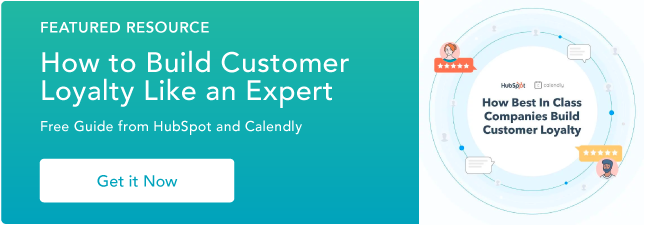
Don't forget to share this post!
Related articles.

Customer Stickiness: What It Is and How You Can Build It

Customer Loyalty: The Ultimate Guide

The Beginner's Guide to Building a Customer Loyalty Program

14 Customer Loyalty Trends to Follow in 2022

7 Tips to Reduce Customer Effort and Increase Customer Loyalty
![brand loyalty research survey How & Why Loyalty Punch Cards Attract Customers to Your Brand [+ Examples]](https://www.hubspot.com/hubfs/customer-loyalty-punch-card_6.webp)
How & Why Loyalty Punch Cards Attract Customers to Your Brand [+ Examples]

How a POS System Can Drive Your Customer Loyalty Program

16 of the Best Customer Loyalty Software for 2023

Customer Loyalty Analytics: 6 Ways to Help Grow Your Business

What Is the Customer Loyalty Ladder?
An actionable guide on building customer loyalty and retention
Service Hub provides everything you need to delight and retain customers while supporting the success of your whole front office
17 Brand preference survey questions that measure customer loyalty
Looking for example brand preference survey questions? These samples will help measure brand preference & more.
Why are brand preference surveys important?
Brand perception survey questions, how to write a brand preference survey, who to send your brand preference survey to, before you go: here’s what will make your brand preference survey even better, faqs about brand perception survey.
You should always have this voice in your head when crafting a new marketing strategy, and it shouldn’t (just) be your inner critic: it should be your customer.
What would your brand and products look like if your customers were the CEO? It might sound like a ridiculous fantasy, but having their needs and wishes at the forefront of your strategy will be what make you their go-to brand. Every. Single. Time.
Brand preference is a complex concept, because you can often not predict whether trends or friends are more important when choosing who to shop with. But how do you learn about your customers’ preferences? Most importantly, how do you develop your brand to match them?
Time to launch a brand preference survey and find out what makes them tick and what would make them stick. In this article, we’ll specifically focus on brand preference questions that revolve around customer loyalty. Ready to launch a kick-ass brand perception survey for your market research?

If you know why customers choose your brand—or any brand—you can use that knowledge, get one step ahead and become their first choice.
It’s crucial that you know their motives for choosing a brand: it’s rarely random. A brand preference survey reveals what could bind consumers to your brand.
Brand preference and customer loyalty are obviously closely knit: knowing what people prefer, will help you create a brand they want to be loyal to.
But can you even measure customer loyalty through a brand perception survey?
Of course you can, with the right questions—and by combining the answers with the right metrics.
With a brand preference survey, you can measure the non-quantifiable part of customer loyalty—their motives, their thoughts, their wishes. If you combine this with the metrics below, you get a full picture of customer loyalty around your brand.
The Experts’ Guide to Brand Tracking
How to look at the impact of things like audience reach, panel diversity, and survey design to help you decide whether your current brand tracker is up to scratch.
Customer Lifetime Value (CLV)
One of the most widely known customer loyalty metrics is the CVL. It’s the sum of how much value a customer will bring to your brand in the entire time they shop with you. In other words: how much money they’ll spend on you.
Consider how important this is for car brands, for instance. If someone can be converted into a hyper-loyal Mercedes-Benz driver, it will guarantee the business a big CVL, with a very high ROI.
Net Promoter Score (NPS)
How likely are you to recommend us to friends, family, colleagues? It’s one of the most-asked questions by businesses, and it’s an important one.
Your NPS goes beyond loyalty and lets you find out whether people are willing to be brand ambassadors, recommending you to others. Who wouldn’t want some free salespeople?
On the other side of the scale, however, you find out if there are people who could harm your brand by badmouthing you to their nearest and dearest. It’s essential to find out the motives of both.

Repeat Purchase Rate
How many people buy from you more than once? This is an important one, especially for goods that people are meant to buy more often.
If you get a lot of new business, but rarely anyone sticks around for a second purchase, it could mean that your product or service, or your marketing messaging or overall customer experience aren’t a match and people are disappointed.
Upsell ratio
Let’s close the list with an important metric in advanced customer loyalty, the upsell ratio.
Picture Apple users for a second. If you have an iPhone, it’s likely that you have AirPods, and not some other brands of headphones. You might work from a MacBook, because well, it simply works better with your phone, right? That Apple TV is just the next logical step.
And so, the list goes on. The upsell ratio is all about selling customers not more of the same product, but additional products or services.
When combining these metrics with data on reasons people buy from you, you get a goldmine of information that will help you improve marketing, products, customer service and so on.
How do you get that other data? With a survey. Let’s move on to the survey questions that you could be asking to identify what loyal customers are really thinking about your brand image and product features.
The brand perception survey questions below will give you valuable insights into how consumers perceive your brand and how well consumers connect to it, but it’s not a matter of copying and pasting this list in a survey.
It’s important that you choose and add questions that are specific to your market research goals, that match the place in the customer journey your target audience is in, and that you use your own words to stay on brand—because a survey is just another opportunity to show off your brand qualities.

Now that we’ve got that out the way, here are some brand perception survey questions for your next brand preference or brand perception survey.
1. For how long have you been aware of X Brand?
Let’s start at the beginning. If your brand has been around for a long time, and someone has only recently learned about you—what has changed in your branding? Or was it simply that they didn’t fit in your target group before? What is at the core of that vital brand awareness ?
Give your respondents options here, and make clear it’s an approximate. You could even remind them of specific campaigns or product launches from the past.
Asking this question can be interesting if your brand has a longer track record, and you want to investigate how any changes in either your marketing or products have influenced your customers’ loyalty. But for that, you need to know if they knew about the changes, about the ‘old’ you.
2. When was the first time you bought from X Brand?
This question is connected to the first one and a useful follow up. If someone knew about your brand for a long time but it took them a while to buy from you, it can be interesting to dive into that period between first locking eyes and sealing the deal. Were they simply not convinced by your brand? Did their needs change? Did your brand change?
3. Why did you decide to buy from X Brand?
If you’ve finally convinced someone to buy from your brand, it’s good to know what gave them the last push.
Note that their first reason might not be the same as the reason they are still buying from you, so you could follow up with a question about that.
4. Thinking about X Brand, name all the types of products it sells.
With an open-text question like this you’ll find out what people think your brand actually sells when they aren’t prompted with cues. You’ll learn about certain products or product categories that are valuable to your brand, and you’ll also find out whether that big specific product campaign you’ve published has had any effect.
5. What would make you switch to a competitor?
Is someone’s loyalty simply based on price? You can give respondents multiple options here, such as proximity, or certain features, to gauge what makes them loyal to a brand, and find out what you should be competing on.

6. Which of the following statements do you associate with X Brand?
How does your brand make people feel ? By offering a list of emotive responses here you’ll get an understanding of the vibe customers get from your brand. And with that you’ll know whether your marketing and branding strategies are working or whether you need to give them a rethink.
Here are some possible answer options you could use for a question on brand perception like this:
- It offers quality products
- It’s trustworthy
- It’s good value
- It’s expensive
- It’s innovative
7. On a scale of 1-10 how do you rate X Brand’s customer service?
For this question, you want to pick a few competitors who sell similar products, and have a little competition. That’s right: have them rate competitors as well, using the same question format. You can include a scale that measures different aspects, from customer service to price-quality.
8. Which of the following, if any, have you purchased in the past 12 months?
Present respondents with a list of options here, of products that are relevant: it doesn’t have to be the exact same products, but also substitutes or complementary products.
9. How likely would you be to recommend X Brand’s products to others?
Ah, there’s the NPS!
We had to include it in this list, because it’s a must-have in any brand preference or brand perception survey. The NPS divides your respondents into three levels of loyalty:
- Detractors, the ones who would recommend others not to buy from you
- Passives, who don’t say anything about your brand at all
- Promoters, who want to recommend your brand to others.
It’s unrealistic to expect everyone to be a promoter for your brand (although that shouldn’t mean you don’t strive for promoters), so it’s important to find out why some people wouldn’t recommend your brand to others. Don’t just focus on the positives!
10. How likely are you to continue using the services from X Brand?
Maybe someone was loyal up to the point they last bought from you, but now something has changed. Or they happily continue being your customer. Both scenarios are important to investigate, and this question kicks it off perfectly.
11. How interested would you be in checking out other products or services from X Brand?
Is someone loyal to your brand because of one specific product, or do they trust that your brand could fulfil other needs as well? Think back to those Apple fans for this question, and you see how essential it is to build brand trust.
12. Complete the following sentence: I think X Brand is…
If you ask people how they feel about a brand, they’re probably lost for words. So for this question, present them with a list of adjectives, both positive, neutral and negative, to find out what people think about your brand.
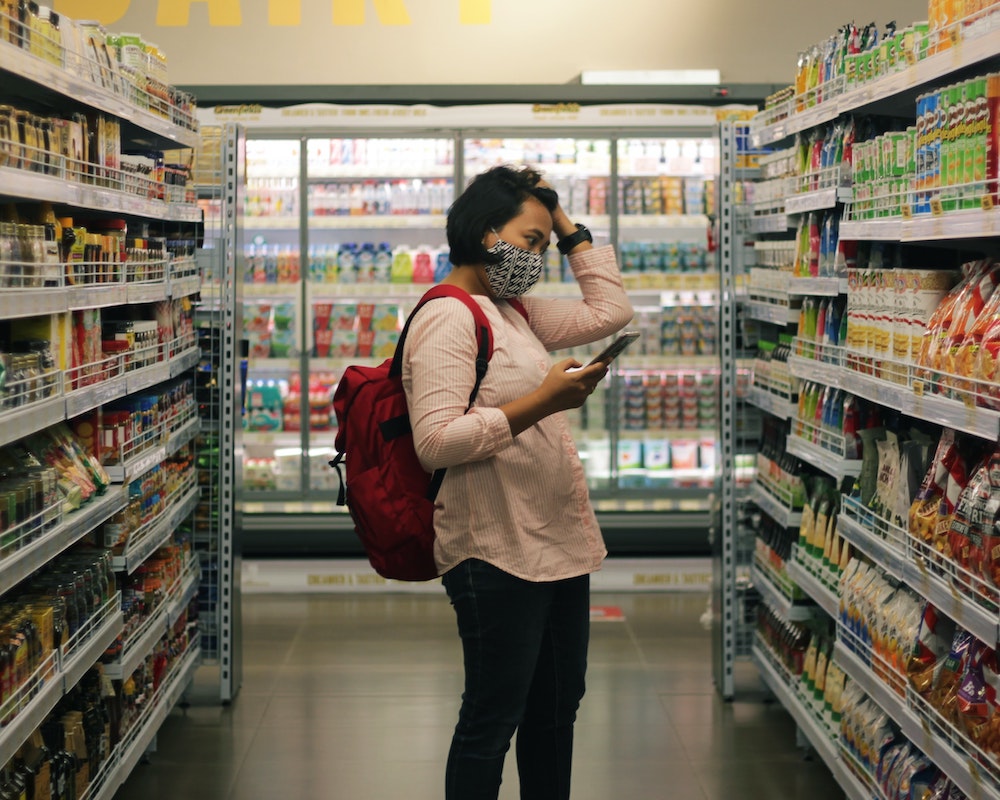
13. What are the top three features that are most valuable to you in [specific product]?
This is not just for flattery—asking your respondents this will show you what you have to double down on and, more importantly, what not to change. Give them a list of features to choose from that your product team can also work with and understands what it is: you want to avoid people naming features that you don’t recognize or aren’t sure about what they mean.
14. If you could change just one thing about [specific product], what would it be?
Don’t assume customer loyalty lasts forever—also ask questions that investigate what they don’t like about your product. This style of survey question keeps the negative connotation out but can give you a clear picture of what they don’t like or what you’re lacking.
15. How often do you use X Brand’s products or services?
Are they seemingly loyal to you, but also mix it up with other brands? Do they religiously only use your product? Or was this just a one-time thing? This type of question should give you some answers. Give them several options to choose from to categorize your users.
16. How would you feel if you could no longer use X Brand’s product or service?
We know for a fact that some people would have a minor meltdown if Apple’s next radical move would be to simply stop selling any products.
This question will help you gauge the intensity of customer loyalty to your brand. If you’re leaving the market and that would leave them feeling indifferent, it’s time to step up your game.
17. What makes you feel valued as a customer?
We’re finishing the list off with this banger: how could you make your customers feel more valued, thus making them more loyal?
In some cases, people want to receive rewards, or can be incentivized into being loyal. Other times, they just want customer service to be attentive, or to have a say in how your products or services are shaped.
How is your brand performing over time?
Understand how consumer preference and opinion changes over time with a continuous brand tracker
Before you start crafting your very own brand preference survey, take a step back and look at these tips to make your market research a success.
Mix things up
The questions we showed above are a mix of open, closed and scale questions, and it’s important that you mix things up in your survey as well. It might be tempting to only ask open-ended questions, thinking you’ll get a lot of valuable insight, but people might get bored or tired after a long list of open-ended questions.
Keep people interested with a genuinely interesting survey experience.
Add something to reward loyalty and assistance
For branded surveys, it could be fun to reward respondents for participating. This is another way of thanking them for their loyalty, which is completely in line with the survey.
Learn about what your customers don’t like
Don’t just focus your questions on what your customers prefer, also find out what they don’t like. After all, it’s easier to break loyalty than to build it, so be wary of what might ruin your relationships.
Combine brand perception with other data
Your survey should match the metrics you already have or want clarified about customer loyalty.
For instance, if you compare your CLV data and upsell ratio and see that a certain audience group spends more than others, a brand preference survey can give you some interesting information on that.
How do you select the right audience for your brand perception survey? With the focus on loyalty here, it’s important that you survey people who’ve bought from you at least twice.
Your target customers have experience with your brand and their customer satisfaction isn’t based on a one-time experience.
Depending on your market research, for instance, if you’re thinking of launching a new product or brand, you could also be interested in people’s loyalty to competitor brands in the current market. This means you can find current customers in a specific product category and find out if they’re too loyal, or if you could steal them from the competition.
For these kinds of brand perception surveys, it’s less valuable to target non customers who have no experience within your own product category or a particular product. Luckily, Attest lets you hyper-specialize when it comes to selecting the right audience for your survey.
Finding out what your target market wants is easier said than done—but it all starts by simply asking, and using online consumer surveys is the easiest way to do that.
Attest comes with all the brand management tools you need to start the conversation, and analyze the results of your brand perception survey. Start with tweaking our brand tracking templates and see how easy it is to measure brand preference and customer loyalty!
And to give you the perfect intro, here’s our quick summary of brand tracking and how you can use it to properly understand what consumers think about your brand over time.
See our brand tracking case studies to learn how your brand can also benefit.
In a brand preference survey, you gauge to what extent consumers prefer a certain brand over others. You will have to ask questions about competitor brands, preferences in products and shopping, and their intentions when it comes to repeat purchases. Ask the right questions (and get the best insights) with our brand tracker template .
Mix metrics with questions that give context to the data to get a clear view of your brand perception. Dive into the reasons people buy from you more often with open-ended questions and comparisons to your competitors. For detailed insights, try our brand tracker template .
Improving the channels and being consistent in marketing messaging and branding can help you stay top of mind in your target audience, aiding both in brand awareness and brand preference. See our brand tracking guide for further guidance.
Learn more about how to build awareness of your brand .
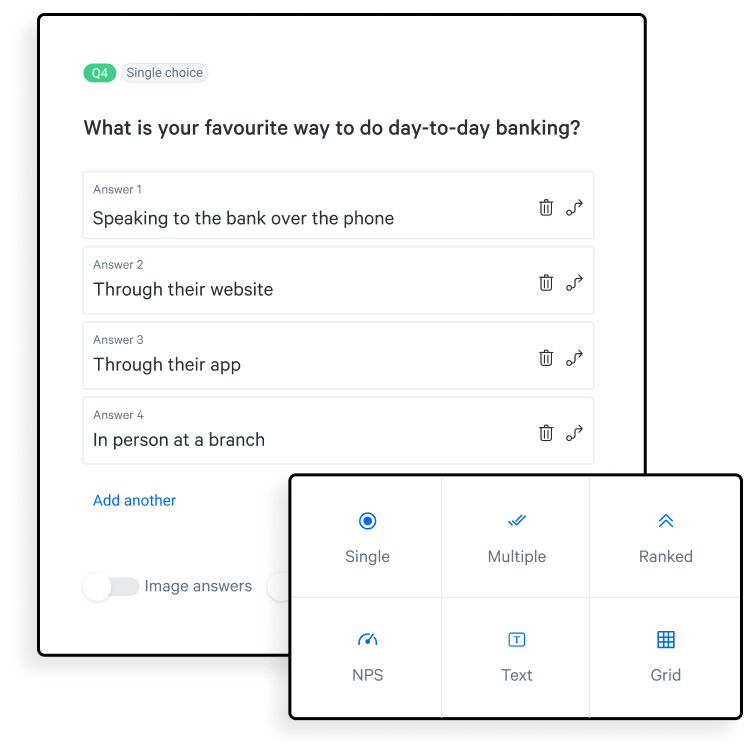
Get started with Attest
Start using consumer research to provide confidence in every decision with the right insight, at the right time.

Elliot Barnard
Customer Research Lead
Elliot joined Attest in 2019 and has dedicated his career to working with brands carrying out market research. At Attest Elliot takes a leading role in the Customer Research Team, to support customers as they uncover insights and new areas for growth.
Related articles
Defining your brand purpose: what it is, why it matters, and how to start, brand tracking, turning poop into gold: baby brezza finds global opportunity for diapering product, how to kick up a stink with clean deodorants, subscribe to our newsletter.
Fill in your email and we’ll drop fresh insights and events info into your inbox each week.
* I agree to receive communications from Attest. Privacy Policy .
You're now subscribed to our mailing list to receive exciting news, reports, and other updates!
Customer Loyalty: 25 Survey Questionnaires Examples
by Formplus | Last updated: May 28, 2020
Related Posts
45 employee survey questions + [free template], 25 ways to write gender survey questions, 55 relationship & couple survey questionnaire, 25 student survey questions + [template examples].
Ever heard the saying, "Customer is King"? Well, this is true as every business depends on its customers in order to grow its brand, achieve development, and make a profit. Whether you are a small-scale or large-scale business, achieving customer loyalty must be top of your priority.
Customer loyalty results from brand intentionality in terms of top-notch service delivery, good customer retention practices, and value creation. It is important for every organization to understand the importance of customer loyalty and continuously track this using the different methods available.
What is Customer Loyalty?
Customer loyalty refers to a customer's commitment to continually patronize a brand due to positive customer experience, a high degree of customer satisfaction, or the value received from the brand. It is an important aspect of a business that speaks to customer satisfaction.
It connotes an allegiance to a brand to the extent that the customer subscribes to an organization's product or service, solely and is not willing to switch to a competing brand. Customer loyalty is a reward for excellent service delivery and brand loyalty.
Customer loyalty provides a lot of benefits to your organization. The organization enjoys free mouth-to-mouth advertising, customers patronize the organization regularly, customers spend more money leading to more revenue and profit and the customers enjoy an overall positive business experience.
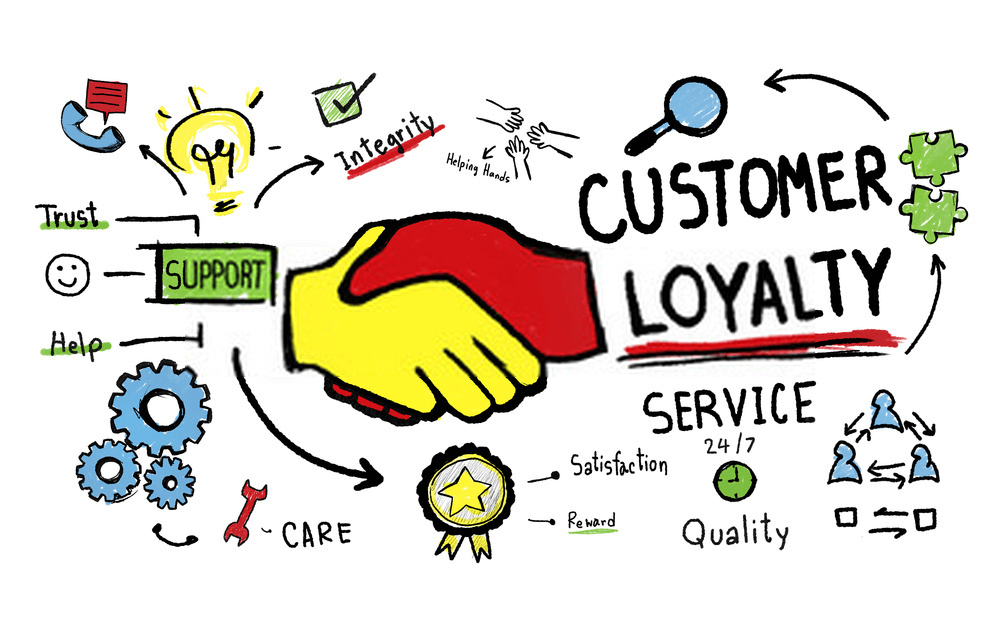
How to Measure Customer Loyalty
Share of wallet.
Share of wallet is an important method of tracking customer loyalty in your organization that measures the level of your customer's expenditure in particular sales or service business categories. Understanding how it works would enable your organization to develop better customer loyalty and retention strategies.
Technically, if a customer continues to patronize a particular sales or service business category, it connotes some degree of customer loyalty. This is different from getting more customers to patronize a particular business category since an Individual's capacity to incur expenditure in a particular category is fixed.
- How to Calculate Share of Wallet
Share of Wallet = customer spend/ Customer category spend
Customer Lifetime Value
Customer lifetime value is a method of scaling how long a customer would patronize your business in terms of goods and services before lapsing. It helps you to track a customer's performance over a period of time.
In addition, customer lifetime value allows an organization to determine how much it should invest in sustaining the business relationship with a viable customer(s). This information is extremely useful when an organization is coming up with customer retention strategies and its business case.
- How to Calculate Customer Lifetime Value
Customer Lifetime Value = (Average transaction value multiplied by the average number of times a customer transacts before lapsing) - your cost per acquisition (CPA).
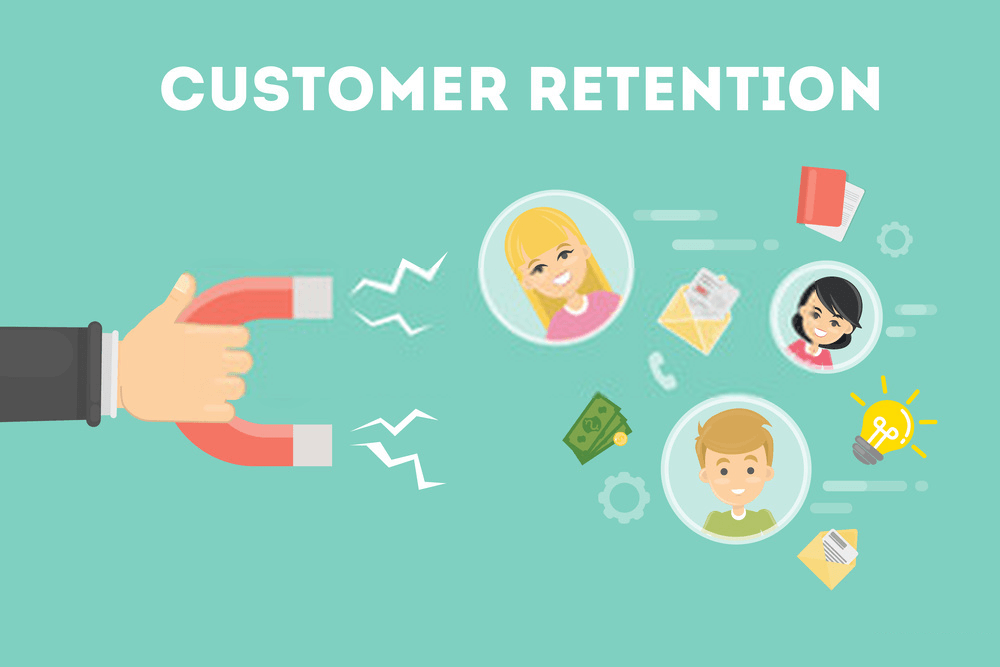
Recency is a method of tracking how recently a customer patronized your organization in terms of goods and/or services. If your organization sells everyday goods or provides everyday services, such as online retail or e-commerce organizations, Recency can be an extremely useful indicator of loyalty.
As an organization, you should track how often your customers return to transact business with you. Even if spend per customer visit continuously increases, if recency is on the decline, the business or organization may have a customer loyalty problem.
Visit Frequency
Visit frequency refers to the number of times a customer makes use of your business in terms of goods and services. Tracking visit frequency can help you to understand the trends in customer behavior, and it can serve as an alternative for Share of Wallet method.
Weight of Purchase
This is also referred to as the spend per transaction method and it shows how much of investment a customer is making in your business every time he or she patronizes you. The weight of purchase helps you track any changes in the customer's financial behavior.
Factors such as an increase in pricing can affect a customer's spend per transaction. If there's a decline in the weight of purchase, it could suggest that a customer is splitting his or her purchasing power with a competing business.
Active Customer Value
Active customer value refers to the number of active and consistent customers an organization has. Having a clear idea of the number of active customers in terms of business transactions and content engagement would help an organization to track customer loyalty.
Customer Loyalty Index
This is an important tool that is used to track loyalty over a period of time. It takes into cognizance; the customer's repurchasing and upselling rates plus values of the Net Promoter Score or NPS.
25 Customer Loyalty Survey Questions
- How likely are you to recommend our services?
- Very likely
- Somewhat likely
- Not likely
Face-to-face marketing is one of the strong indicators of customer loyalty. If your customers are willing to recommend your services to friends and family, then they believe in what you have to offer.
2. For how long have you been patronizing our organization?
- 10-15 years
- 15-20 years
- 20 years and above
This question helps you to determine your firm's customer retention capacity.
3. How likely are you to switch to a competing organization?
This is another strong indicator of customer loyalty. If your customers are willing to switch to a competing brand, then it shows that you still have to do a lot of work in terms of earning their loyalty.
4. How likely are you to keep patronizing us?
This also helps your organization monitor its customer retention rate.
5. How likely are you to convince others to patronize us?
This question is one of the greatest indicators of customer loyalty. Loyal customers are more likely to recommend an organization to their friends and family.
6. How likely are you to expand the use of our product or service?
Loyal customers would be willing to improve on their patronage to your organization.
7. How convenient is our product or service?
This question would help you get feedback on your product or service. Fine-tuning your product to speak to your customer's needs would help you achieve customer loyalty.
8. How well do our customer support team answer your questions?
- Worst
9. How likely are you to patronize us in the future?
10. Would you be willing to try out our other services?
11. What do you like most about our services?
This is a feedback question that allows customers to highlight what they enjoy most about an organization's services.
12. How would you rate our service delivery?
13. How would you rate our customer support team?
14. Would you like a customer reward system?
15. How much do you trust this brand?
Customers who trust your brand are more likely to be loyal to it.
16. How reliable is this brand?
Brand reliability is an important prerequisite for customer loyalty as customers would only stay loyal to brands they consider reliable.
17. Did our product meet your expectations?
Customers are most likely to repeat patronage if the product or service that they purchased satisfied the required need.
18. Any other comments, suggestions, or observations?
It is important to provide an opportunity for customers to provide suggestions on your organization's service delivery.
19. How can we make our service delivery better?
To earn customer loyalty, your organization must be a customer-oriented organization. This can be achieved by requesting feedback on your service delivery.
20. How would you describe our products or service?
21. On a scale of 1-5, how well do our products or services meet your needs?
22. On a scale of 1-10, how satisfied are you with our organization?
23. How would you rank the quality of our product?
24. How would you rate the value for money of our service?
25. How helpful have we been in providing responses to your observations, inquiries, and complaints?
Best Survey Templates to Measure Customer Loyalty
One of the easiest methods of tracking customer loyalty is by carrying out a survey; whether online or offline. A customer loyalty survey typically contains questions that revolve around customer feedback, brand satisfaction and reliability, which are important for any organization.
Here are 7 different survey templates from Formplus which you can use to track customer loyalty for your brand.
- Customer Complaint Form Template
This template allows the organization to effectively profile and treat customer complaints in real-time. It contains different fields that request both the bio-data of the customer and the details of the complaint at hand and the customer's signature which authenticates the complaint.
With this form, you can swiftly respond to all complaints as there's no need to have extended waiting periods that can affect your customer's loyalty.
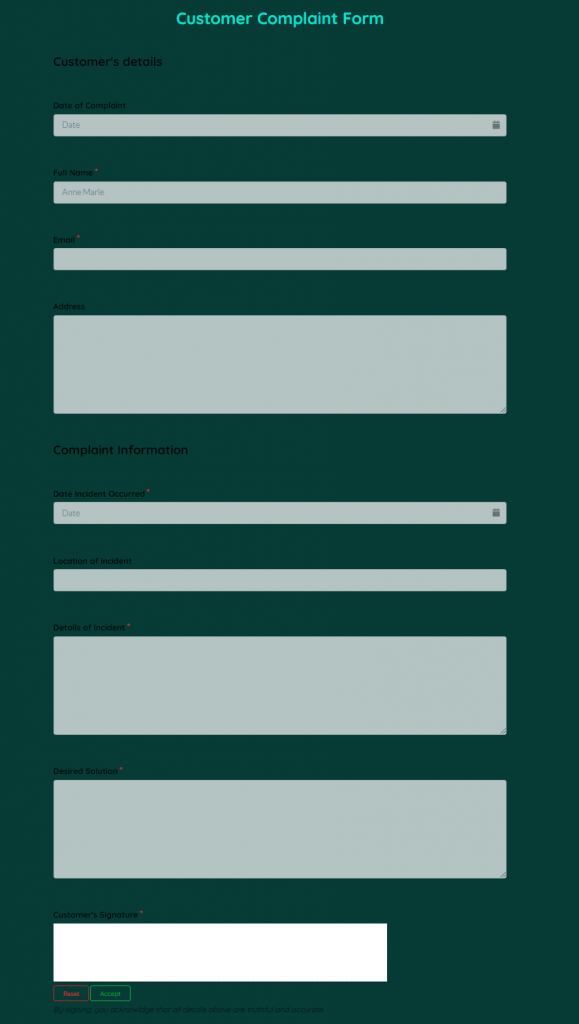
Use This Template
- Customer Satisfaction Survey Template
This online survey form allows you to measure your organization's service delivery and overall customer disposition. It contains specific questions that would require the customer to communicate his or her true experiences with your organization in terms of customer treatment and service delivery.
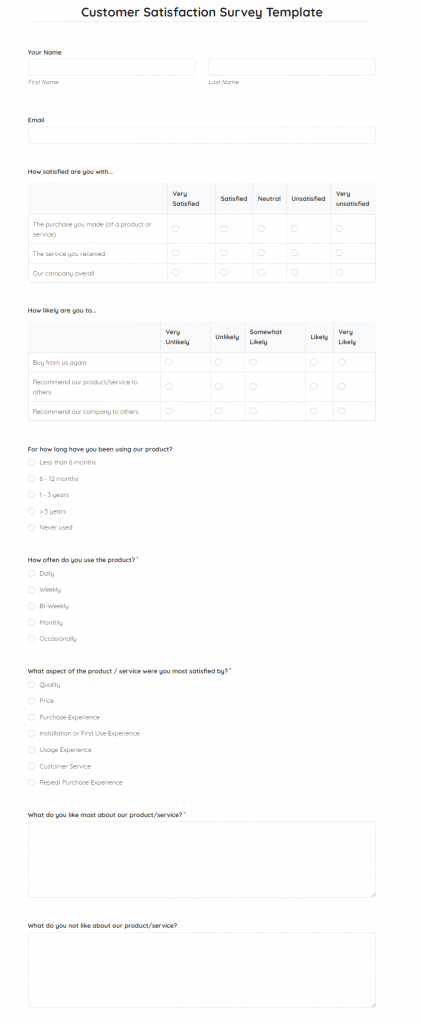
- Hotel Feedback Form Template :
The Formplus hotel feedback template requires the customer to state how satisfied he or she was with different services rendered by the hotel. These include the pricing, food, neatness and comfort, and general staff attitude.
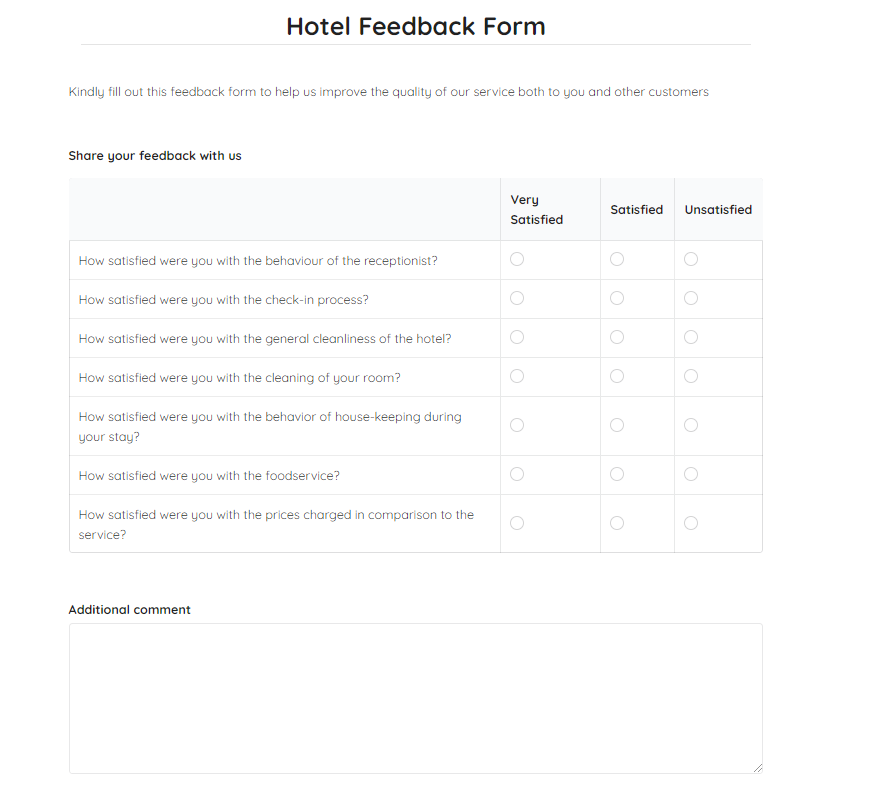
- Product Pricing Form Template
The product pricing survey form allows you to get an idea of your customers' expected price range for your product. It also gives you an idea of the pricing of your competitors.
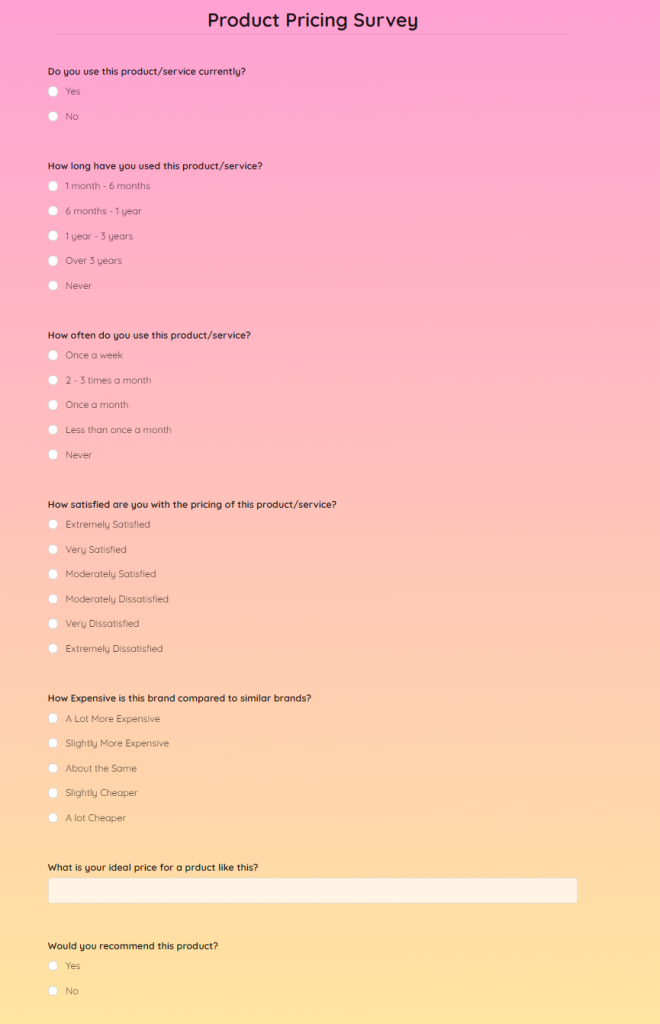
- Restaurant Satisfaction Form Template
Restaurant satisfaction survey form helps you to get feedback from your customers with regard to your quality of service. It contains specific questions requiring the customer to rate specific areas of service.
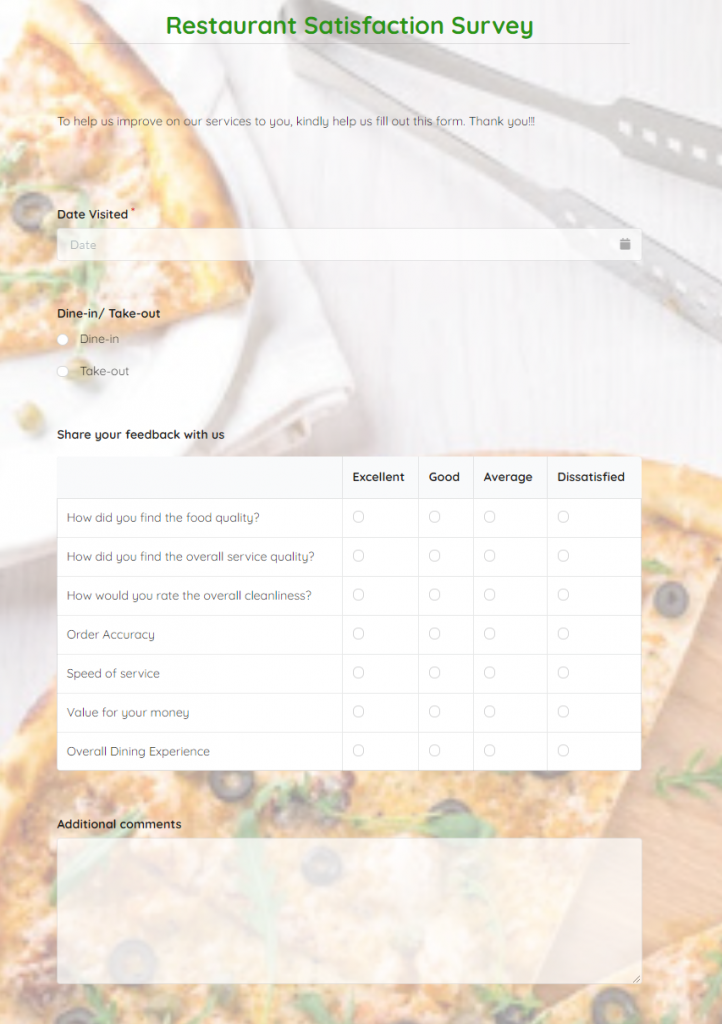
- Refund Request Form Template
A refund request form helps you to quickly receive and process any requests for a refund made by your customer. This form template requests specific information including the order date and order ID of the customer.
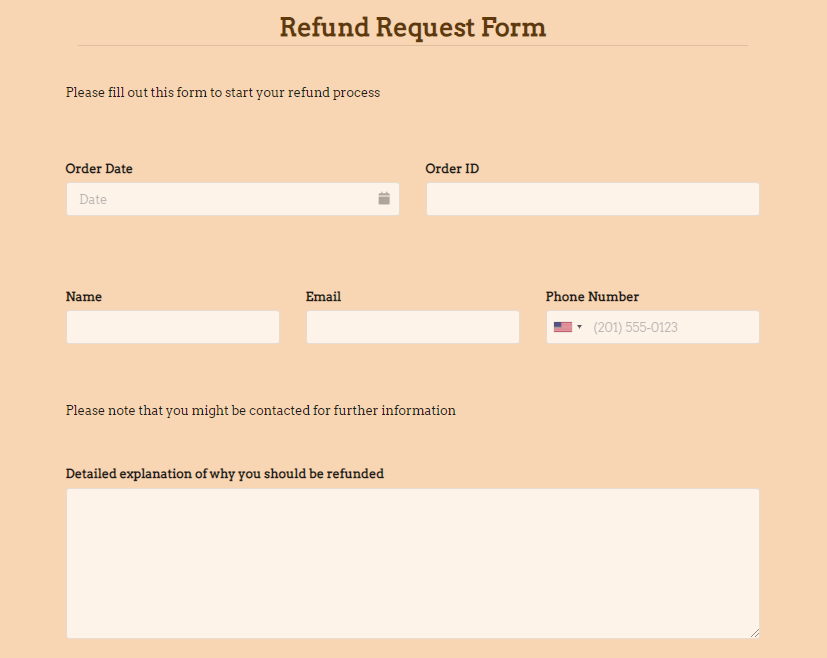
- Website Evaluation Survey Template
The website evaluation survey helps you to determine the degree of customer functionality of your organization's webpage. Customers provide feedback on the site's user interface, appearance, and appeal.
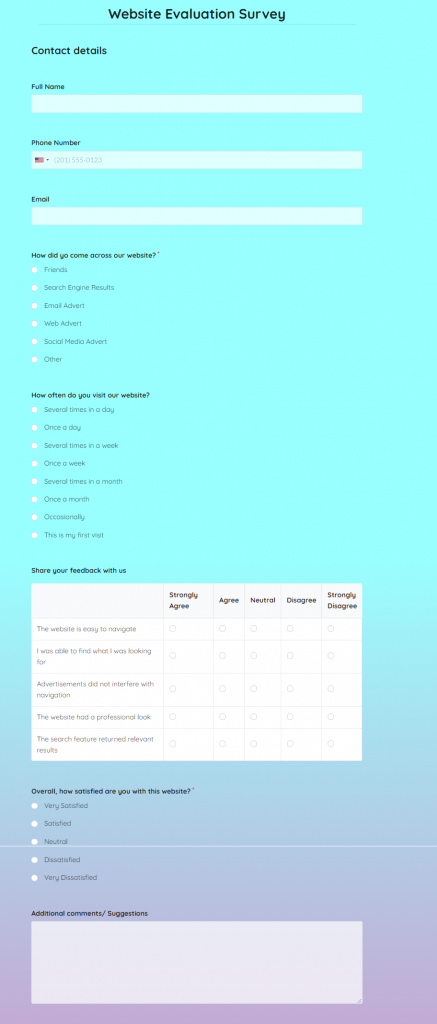
How to Conduct Customer Loyalty Survey on Formplus
Formplus is a data-gathering platform that allows you to carry out customer loyalty surveys using online survey forms. You can make use of available customer loyalty survey form templates or you can create your unique customer loyalty survey form using the Formplus builder.
Here's a step-by-step guide on how to conduct customer loyalty survey on Formplus.
Sign in to Access Formplus Builder
To access the Formplus builder, you will need to create an account on Formplus.
Once you do this, sign in to your account and click on "Create Form " to begin.
Edit Form Title
- Click on the field provided to input your form title, that is, Customer Loyalty Survey Form.
Edit Form
- Click on the edit button to edit your customer loyalty survey form.
- Add Fields: Specify form field inputs from the Formplus builder inputs column. There are several field input options for customer survey forms on the Formplus builder.
- Edit fields to include different customer loyalty survey questions.
- Click on "Save"
- Preview form.
Customize Form
Formplus builder allows you to add unique features to your customer loyalty survey form. You can personalize your form in the builder's customize section.
Here, you can add relevant background images, embed your organization's logo, and other features. You can also change the display theme of your form.
- Save and Share: Save your customer loyalty survey form and share the link with respondents. You can share your customer loyalty survey form via email, on social media or embed it in your organization's website feedback section.
How to Increase Customer Loyalty
- Prioritize Good Customer Service
Good Customer service often reveals the extent to which an organization values and respects its customer base. According to the 2015 Aspect Consumer Experience survey , 67% of customers are of the opinion that an organization's customer service culture is a reflection of how much value they place on their customers.
It is pertinent for every organization to develop a good customer support culture. Usually, customers keep scores of every interaction they have with an organization and this goes a long way in determining how loyal they are to a brand.
Ensure that your team is friendly, approachable, well-mannered, and prompt; especially with responding to online inquiries as research shows that customers expect almost-immediate feedback when they interact with a brand online. With great customer support, your business is sure to earn the absolute loyalty of its customers.
- Connect with your Customers
Ensure that your relationship with your customers is not merely transactional. Customer loyalty is earned when your customers feel like an important part of your brand; not just as individuals helping you to make a profit and stay in business.
To achieve this, ensure that you regularly reach out to your customers and become a part of their lives. Create a community by sending encouraging emails, newsletters; involve them in your organization's decision-making process, organize a meet-and-greet with their favorite celebrities, or host a customer appreciation event.
- Provide Incentives and Discounts
A good way to earn customer loyalty is to reward your customers for patronizing your brand. Often times, you may have to give your customers a head start by offering free products or services for a limited period of time.
- Prioritize Excellent Service Delivery
One of the surest ways to earn your customer's loyalty is to ensure that you provide top-notch service delivery. When your customers are convinced that your brand provides the best service or product, they would be completely devoted to you.
Examples of Customer Loyal ty
- Starbucks Rewards
Starbucks Rewards is a customer loyalty program that was targeted at making it easier for customers to place and manage orders on Starbucks. The first-of-its-kind mobile application made it possible for customers to make orders from the comfort of their mobile devices and earn loyalty points (stars).
- Moosejaw Rewards Program
Moosejaw rewards program allows customers to enjoy 10% cashback on fully-priced items and 40% cashback on special-priced items which is a great way to stimulate continuous patronage from customers. It also offers free shipping on outdoor clothes like jackets and free 2-day shipping on orders over $49.
Advantages of Customer Loyalty
- Free Brand Advertising/Advocacy
Brand advocacy occurs when your customers willingly advertise your brand without any prompts from your organization or team. Customer loyalty earns your brand fee advertisements on different platforms as loyal customers are die-hard fans who would continuously go out of their way to promote your brand without any form of payment.
- Price Insensitivity
Price insensitivity occurs when customers are so loyal to a brand that pricing because inconsequential in influencing patronage. This means that even if the price is increased, customers would still opt for your brand because they trust your service delivery.
Referrals are new customers who are acquired through direct marketing from an existing customer. Recommendations from existing customers are one of the most powerful marketing tools for any brand because they often translate to direct sales or patronage; without any extra nudge from the organization.
- Increased Revenue
Naturally, customer loyalty leads to an increase in revenue as the organization enjoys more patronage, increased sales, free marketing, and referrals.
- Improved Reputation
Customer loyalty ensures that existing customers feel esteemed, and encourages new clients to keep patronizing your business. It further expands customer appreciation and increases the chances that current clients will share their satisfaction with others around them.
The more a customer feels that your business acknowledges them, the more he or she will get the message out. Word-of-mouth advertising is one of the cheapest and most effective methods of growing a business.
Conclusion
Customer loyalty is an important area that every organization should pay attention to as it offers so many benefits. It is a proven means of growing an organization's customer base, earning more revenue and profit, and entrenching your brand in its target market.
Every organization should track its level of customer loyalty and this can be done through the use of a customer loyalty survey form. A customer loyalty survey form contains questions that cut across the different important aspects of your business.
You can create your personalized customer loyalty survey form on Formplus using the Formplus form builder. Formplus also allows you to access different customer loyalty survey templates that can be used to gather useful information from your client-base.

The New Equation

Executive leadership hub - What’s important to the C-suite?

Tech Effect

Shared success benefits
Loading Results
No Match Found
Creating loyalty in volatile times
PwC Customer Loyalty Survey 2022
of consumers stopped using or buying from a business in the past year
would share some type of personal data for a better customer experience
would be less loyal if the online experience isn't as enjoyable as in person
Volatility in consumer behavior is at an all-time high. The COVID-19 pandemic fundamentally changed many needs and preferences. Inflation and a turbulent economy are influencing buying decisions. Technology creates unprecedented connectivity and access to goods and services. Consumers know more about where companies stand on environmental, social and governance (ESG) issues and expect businesses to share their beliefs. And let’s be honest: Consumers as a whole are more discerning than ever.
This all leaves companies wondering how they can better shape consumer demand and drive engagement with their brands. Unlocking what drives consumer loyalty has companies asking, “How do I attract and retain my customers?” Along with providing new insights from more than 4,000 consumers in the US, our PwC Customer Loyalty Survey 2022 reveals several opportunities for businesses to strengthen relationships, increase customer lifetime value and reduce the likelihood that they’ll leave.
What wins — and can lose — a customer’s loyalty
More than one-fourth of survey respondents told us they stopped using or buying from a business in the past year, and bad experiences — with products or services and/or customer service — were the overwhelming reasons why.
As inflation persists, more than half of respondents said getting good value for the price of a product or service is a top reason why they keep using or buying from a business.
Personalization is a priority, too. Four out of five consumers would share some type of personal data for a better experience, with such information as email address, birthday and age, and sex/gender identity topping the list.
In an increasingly automated world, the human touch still matters. At least one-third of respondents said human interaction is important to their loyalty, and for many types of businesses it was more than 50%.
Ignore the digital dimension at your peril. More than half of respondents said they’re less likely to be loyal to a brand if its online shopping experience isn’t as easy or enjoyable as shopping in person.
As you might expect, generations differ significantly when it comes to loyalty. Generation Z (ages 18-25) and Millennials (26-41) are generally more mobile than Generation X (42-57) and Baby Boomers (58 and older), but they’re also more open to personalization and perks that can build loyalty.
Loyalty in a dramatically different world
The pandemic disrupted a wide range of industries and left businesses scrambling to adapt to shifting customer needs. Nearly three out of ten consumers in our survey say today they’re more likely to try a new brand, and younger generations are even more likely. Those percentages are higher for certain types of businesses, such as restaurants (44% more likely to try a new brand), consumer goods (38%) and supermarkets (36%).
Consumers are not only willing to walk away, they’re actually doing it: 26% of respondents said they stopped buying from a specific business in the past year. That percentage was higher — in some cases much higher — for many types of businesses, including airlines, restaurants, banks and hotels. And again, the younger the consumer, the greater chance he or she left a brand behind.
In addition to COVID-19, consumers are dealing with inflation. Among the many reasons why people regularly patronize a business, getting good value was the top reason at 53%. In addition, 30% said they like the benefits, rewards and privileges — discounts, rebates and special access or offers — they get with a preferred company’s loyalty program. By comparison, only 13% said they don’t consider price.
Among consumers whose loyalty has changed since before the pandemic, 15% say they’re now less loyal to brands they regularly bought from before COVID-19.
Customer experience is critical to loyalty
Bad experiences — even just one — can cost you customers. More than half (55%) of respondents said they would stop buying from a company that they otherwise liked after several bad experiences, and 8% said they would stop after just one bad experience. While 8% may not seem like much, it is when you're talking about a market-leading company with millions of customers. Are you willing to lose that many customers because of one bad experience? And it doesn’t just have to be “bad” experiences for some to leave: 32% said they’d drop a company if it provided inconsistent experiences.
And it isn’t just talk either. Among survey respondents who stopped using or buying from a specific business in the past year, a bad experience with products or services and a bad experience with customer service were top reasons. That indicates that service recovery is more important than ever for companies. In addition, younger generations were more likely than older generations to leave a brand because they liked the experience with another brand better.
What could improve those experiences and help retain customers? More humanity would help. In this automated age, consumers still want to talk to a real person. Respondents said human interaction is important or very important for their loyalty to restaurants (58%), financial services (55%), pharmacies (53%) and hotels (52%). In fact, for each type of business, at least one-third of respondents said human interaction is important. Companies also should determine how to balance investments in human interaction with offering an engaging digital experience. More than half (51%) of consumers said they’re less likely to be loyal to a brand if its online shopping experience isn't as easy or enjoyable as shopping in person. That number jumped to 69% for Generation Z and 57% for Millennials.
When it comes to the subscription services they use, 33% of consumers said they like discounts and rewards the most, 27% said subscriptions are less expensive than alternatives and 23% said they get faster and/or easier service.
Capturing customers through subscriptions
More than half (55%) of consumers in our survey said they belong to at least one type of subscription service that allows them to make regular payments for access to a product or service. Benefits of subscriptions also factor in customer loyalty, as discounts, lower prices, faster and/or easier service and automatic renewals were what survey respondents liked most about the services. As expected, participation varies greatly by age: 81% of Generation Z members and 72% of Millennials said they have at least one subscription, compared to only 31% of Baby Boomers. Music, television and entertainment services are most popular overall, with 36% of respondents saying they subscribe. In addition, 17% said they subscribe to a bundled service that provides multiple services, and more than 10% have subscriptions for household goods, personal care items, food or alcohol, or clothing and fashion items.
Get personal or get lost
Just as loyalty can hinge on a customer’s experience with a business, so can an experience be shaped by how personal it feels to a customer. When asked about getting a personalized experience from a business, 87% of survey respondents named at least one part of that experience that’s most important to them.
In addition, 82% are willing to share some type of personal data for more personalized service. Comfort levels were strongest with personal identifiers, with 48% willing to share their birthday and age, 45% their sex/gender identity and 37% their race/ethnicity. Many consumers also are OK with contact information such as an email address (61%), mailing address (40%) and phone number (35%). Specifics about usage and biometrics are a harder sell. Only 22% said they’re willing to share product usage data, 15% their current location (via mobile phone), 5% facial recognition and 3% a fingerprint.
Consumers also prize flexibility in personalization, with one of the top preferences being “rewards my way” in a loyalty program. That priority offers businesses an opportunity to experiment more with experiential loyalty to improve customer retention. Among age groups, Generation Z is more likely than older generations to want easy or fast access to products or services, brands to remember their preferences and to be able to seamlessly switch between mobile, online and in-store experiences.
Expression of loyalty varies across generations
Between longer lifespans and people interacting with brands at younger ages, businesses have more opportunities to connect with consumers and win their loyalty. Our survey found that Millennials and Generation Z show loyalty in more ways than Generation X and especially Baby Boomers.
While getting good value for price and the quality/consistency of products or services are top reasons why younger people keep using a business, those consumers overall don’t feel as strongly as older ones about those factors. By comparison, more Millennials and members of Generation Z value fast service, feeling like they’re part of a community and having a personalized experience. To that end, more Generation Z members (41%) and Millennials (37%) were willing to share their personal interests, preferences or habits with a business to get a more personalized experience.
Generations also differed in why they stopped buying from a business in the past year. Generation Z and Millennials were more likely to cite more than one reason for leaving compared to older generations. But larger percentages of Generation X and Baby Boomers said they left a brand to support or boycott issues they feel are important in society, such as the environment, diversity and charitable giving.
69% of co-branded credit cardholders say they likely would buy from the brand that issued the card.
Co-branded credit cards help drive customer loyalty
As companies explore other ways to earn loyalty and consumers seek more benefits, co-branded credit cards — offered by businesses in partnership with a bank or credit card company with rewards such as airline miles and fuel points — have grown in popularity. Three out of five survey respondents have some type of co-branded credit card, with higher percentages of men than women and older consumers than younger ones being cardholders. More than two-thirds of cardholders said they’d likely buy from the brand that issued the card, including more than a third who said very likely. But almost one-fourth said the card doesn’t drive more loyalty — they’re neither likely nor unlikely to buy from the brand on the card. Also, similar to the overall shift in customer loyalty during the pandemic, 30% of co-branded cardholders said the benefits or rewards were more valuable now than before COVID-19, while only 10% said less.
Seven ways to win loyalty
The challenges of winning and keeping a consumer’s business are very real, but so are the opportunities for businesses in many industries. Here are some ways you can better connect with your customers and increase the odds of earning their loyalty.
- Recognize the rise of emotional loyalty. Experience is all about how an individual feels when interacting with your brand before, during and after a transaction. The better you understand that, the more ways you can engage with customers — and the more likely they’ll continue engaging with your business.
- Invest in customer segmentation. As behaviors and preferences have changed, you should update analytic models that aim to help you better understand your customers.
- Assess how rigid your loyalty programs are and reconsider the selection of benefits, including expanding beyond points and discounts to experiential loyalty.
- Activate a data-driven personalization strategy to drive effective engagement and stronger individual connections with customers.
- Where feasible, test and learn with subscriptions, maintaining flexibility to quickly adjust in response to subscriber feedback. With existing models, acknowledge the potential for “subscription fatigue” and determine how you can adapt those models to address shifting customer needs.
- Develop a balanced approach to physical and digital customer engagement, including creating a consistent omnichannel experience for customers.
- Prioritize efforts to better understand younger and more racially and economically diverse groups, as recognizing their needs and preferences can provide opportunities to grow their loyalty.
About the survey
PwC surveyed 4,036 consumers in the US between May 5 and May 19, 2022. Respondents in the online survey were adults 18 and older, with demographic weighting to achieve census representation on age, gender, race, US region, income, employment status and marital status.
PwC 2023 Customer Loyalty Executive Survey
Read how 400+ marketing leaders are bridging gaps with customers to win long-term loyalty
Related services
{{filtercontent.facetedtitle}}.
{{item.publishDate}}
{{item.title}}
{{item.text}}

Principal, Customer Transformation and Loyalty, PwC US

George Korizis
Customer Transformation Leader, PwC US

John Rolston
Customer Transformation and Loyalty Partner, PwC US

Anjali Fehon
Customer Transformation and Loyalty Director, PwC US

Thank you for your interest in PwC
We have received your information. Should you need to refer back to this submission in the future, please use reference number "refID" .
Required fields are marked with an asterisk( * )
Please correct the errors and send your information again.
By submitting your email address, you acknowledge that you have read the Privacy Statement and that you consent to our processing data in accordance with the Privacy Statement (including international transfers). If you change your mind at any time about wishing to receive the information from us, you can send us an email message using the Contact Us page.
© 2017 - 2024 PwC. All rights reserved. PwC refers to the PwC network and/or one or more of its member firms, each of which is a separate legal entity. Please see www.pwc.com/structure for further details.
- Data Privacy Framework
- Cookie info
- Terms and conditions
- Site provider
- Your Privacy Choices
Copyright © SurveySparrow Inc. 2024 Privacy Policy Terms of Service SurveySparrow Inc.
11 Best Customer Loyalty Survey Questions You Need to Ask

Kate Williams
Last Updated: 7 August 2024
23 min read

Table Of Contents
- Best Customer Loyalty Survey Questions
- Must-Have Customer Loyalty Survey Questions
- General Customer Loyalty Survey Questions
Brand Loyalty Survey Questions
Loyalty card questionnaire, questionnaire on customer loyalty in banks.
Do you want your customers to stay with you and keep purchasing (or renewing) your products? A customer loyalty survey can help you with that!
Everything that you do revolves around making your customers happy. Every good business goes out of its way to create fantastic experiences for its customers.
The ones that don’t have a hard time retaining customers. So, having loyal customers is something you need to strive for.
What is a Customer Loyalty Survey?
- 11 Best Customer Loyalty Survey Questions
- 35 More Loyalty Survey Questions
- The Importance of Customer Loyalty Surveys
How to Measure Customer Loyalty
- How to Increase Customer Loyalty
- How can SurveySparrow Help Increase Customer Loyalty
Let’s get started!
A customer loyalty survey is used to measure brand loyalty. The results of a customer loyalty questionnaire are to understand whether they will stick with your business. Moreover, loyalty surveys will give you an idea of the kind of efforts that would be required from your customer loyalty programs to ensure that they continue giving their business to you.
While your customer feedback survey results might not be able to pinpoint your customer’s experience with you, it will give you an understanding of how happy they are doing business with you. Going through a sample customer loyalty survey will help you understand what it will address.
By asking the right questions in your customer loyalty survey, you will be able to elicit answers that can help you understand and measure your customers’ loyalty. So, we created this sample customer loyalty questionnaire starter pack.
Customer Loyalty Questionnaire Template
Preview Template

Like the template? Feel free to use it. There are more such templates where it comes from and it’s all free. Yes! No cost..no fuss, you can get access to 1000+ survey templates. You just have to sign up, that’s it.
Now, let’s have a look at some of the key loyalty survey questions you can ask.
The 11 Best Customer Loyalty Survey Questions
Loyalty, in general, needs to be ensured no matter the type of business you run. So, while articulating a loyalty survey, make sure to include some of the following questions. We will list some questions depending on specific use cases further down the lane, but before that, go through the following to get an idea of what to ask in general.
Alternate Approach: Use AI to Generate Questions
Before we jump into the survey questions, we would like to let you know that there’s an alternate approach to generating loyalty survey questions. You can use SurveySparrow AI to generate not just survey questions but an entire survey from scratch in seconds.
The feature is available with the free plan offered by the tool. So, sign up and use the feature for free!
Create Loyalty Surveys with AI
1. How likely are you to recommend our services?
- Very likely
- Somewhat likely
The fact that your customers are likely to recommend your service to their friends and family is one of the best indicators of loyalty. It shows that they love what you offer to them.
2. How likely are you to continue using our services?
This is yet again an indicator of your customers staying with you. The ones who respond with ‘Very Likely’ are the ones who say that they will buy from you again.
3. How convenient do you think our product or service is?
The answer to this question will get you feedback on how your product or service is structured. It will give you an answer to how you can meet your customer’s requirements so that you can convince them to stay with you.
4. Would you be interested in checking out other products or services?
It is a ‘Yes’ or ‘No’ question, and obviously, the ones who say yes have had a great experience with you and are more likely to continue their patronage with you.
5. What do you like most about our service or product?
It is an open-ended question that can help you identify a lot of things about your service or product, depending on how verbose the customer is with their replies.
Based on this response, you can even ask follow-up questions that will help you solve the problem they are facing, if any.
When you do so, you are more likely to come across as a responsible organization that cares about its customers, and it will surely fetch you brownie points, including loyalty.
6. What are the top three features of our product that are most valuable to you?
This question is something that SaaS businesses should surely ask. SaaS businesses usually offer a variety of features, and most customers don’t use all of them.
So if you get to know which features are the most important for a majority of your customers, then you can ensure that those are your best talking points by making them stronger.
7. Were we able to meet your expectations in terms of product quality, features, and build?
Your customers buy from you with the belief that your product will meet their expectations. They will be happy doing business with you if it meets their expectations.
It would be best if you gave them more reasons to continue doing business with you with impeccable customer service.
8. On a scale of 1-10, how satisfied are you with our organization?
This is almost similar to the NPS question, and you can safely assume that the ones who respond with a 9 or 10 are extremely satisfied with your service.
They are not only likely to continue doing their business with you but will also recommend your service to their friends and family.
9. How can we make our service delivery better?
You must be a totally customer-focused organization if you want the best for your customers.
Asking your customers directly if they have any opinion on improving your service delivery is a sign that you want to give your best to your customers.
10. How helpful have we been in responding to questions and complaints?
The swiftness with which you respond to complaints should be the same speed as sending invoices. Most businesses are good at the latter, while the former doesn’t get the importance it deserves.
If your customers know that you will do everything in your power to solve their issues, they will never leave you.
11. How would you rate the value we provide for the money you pay?
This is an interesting question since not only does it dwell upon your pricing, but it also indicates how much they value your product.
The answer to this can give you many insights into these two factors.
30+ More Loyalty Survey Questions You Can Ask
Now that we whave understood the type of questions to be asked in a loyalty survey, let’s have a look at the top survey questions to ask.
NOTE: As we discussed earlier, you can always use AI to create survey questions.
General Loyalty Program Survey Questions
Loyalty programs, as you know, are all about rewarding repeat customers and ensuring retention. A loyalty program survey focuses on understanding the satisfaction level of the current one and looking for areas to improve.
The following are some survey questions you can ask.
- How satisfied are you with our loyalty program?
- How often do you take advantage of the rewards offered by our loyalty program?
- Which aspects of our loyalty program do you find most valuable?
- Are there any rewards or benefits you would like to see added to our loyalty program?
- How easy is it to understand and use our loyalty program?
- Have you ever experienced any issues with our loyalty program? If yes, please explain.
- On a scale of 1 to 10, how likely are you to recommend our loyalty program to others?
- What would make you more likely to participate in our loyalty program?
- How do you prefer to be informed about loyalty program updates and offers? (Email, SMS, Mobile App, In-Store, Other)
- What changes would you suggest to improve our loyalty program?
Brand loyalty surveys help you get a clear picture of how loyal customers are to your brand. You further understand the reason why they choose to be loyal and why they are not. Some brand loyalty survey questions to ask are as follows.
- How would you describe your overall perception of our brand?
- How often do you purchase products/services from our brand?
- What factors contribute to your loyalty to our brand?
- On a scale of 1 to 10, how likely are you to switch to a competitor if they offer a similar product/service?
- How do you rate the quality of our products/services compared to our competitors?
- What makes our brand stand out from the competition?
- How satisfied are you with the value for money offered by our brand?
- How likely are you to recommend our brand to others?
- What improvements would you like to see in our products/services?
- Have you ever participated in our brand’s promotions or events? If yes, please share your experience.
Loyalty cards are another type of loyalty program specifically designed for retail businesses. Retailers can issue loyalty cards and give points everytime customers make a purchase. Once the points reach a bare minimum, customers can avail of certain discounts or offers.
However, to make the most out of loyalty cards, one must know what exactly customers are looking for. For that, you can use the following questions.
- How satisfied are you with our loyalty card program?
- How often do you use your loyalty card when making purchases?
- What rewards or benefits do you find most valuable in our loyalty card program?
- How easy is it to earn and redeem rewards with our loyalty card?
- Have you ever experienced any issues with our loyalty card program? If yes, please explain.
- On a scale of 1 to 10, how likely are you to recommend our loyalty card program to others?
- What additional rewards or benefits would you like to see in our loyalty card program?
- How do you prefer to receive information about your loyalty card points and rewards?
- How do you rate the overall value of our loyalty card program?
- What suggestions do you have for improving our loyalty card program?
Customer loyalty is of the utmost importance in the Banking sector. With the sensitivity of handling monetary transactions and investment plans, banks have to tread carefully. And most importantly offer loyalty programs to retain loyal customers.
The following are some loyalty survey questions to ask.
- How satisfied are you with the overall services provided by our bank?
- How long have you been a customer of our bank?
- How likely are you to continue using our bank’s services?
- On a scale of 1 to 10, how likely are you to recommend our bank to a friend or family member?
- Which of our banking services do you use most frequently?
- How do you rate the quality of customer service at our bank?
- Have you ever encountered any issues with our bank’s services?
- How satisfied are you with the convenience of our online and mobile banking services?
- What aspects of our bank do you value the most?
- How likely are you to switch to another bank in the next 12 months?
- What improvements would you like to see in our banking services?
- How do you rate our bank’s security measures?
- Have you ever used any of our bank’s additional services?
- How satisfied are you with the transparency of our bank’s fees and charges?
- What can we do to improve your overall banking experience?
5 Reasons Why Customer Loyalty Surveys are Important
To give you a clear idea of why you should invest in customer loyalty surveys, let’s have a look at the crucial benefits they bring to the table.
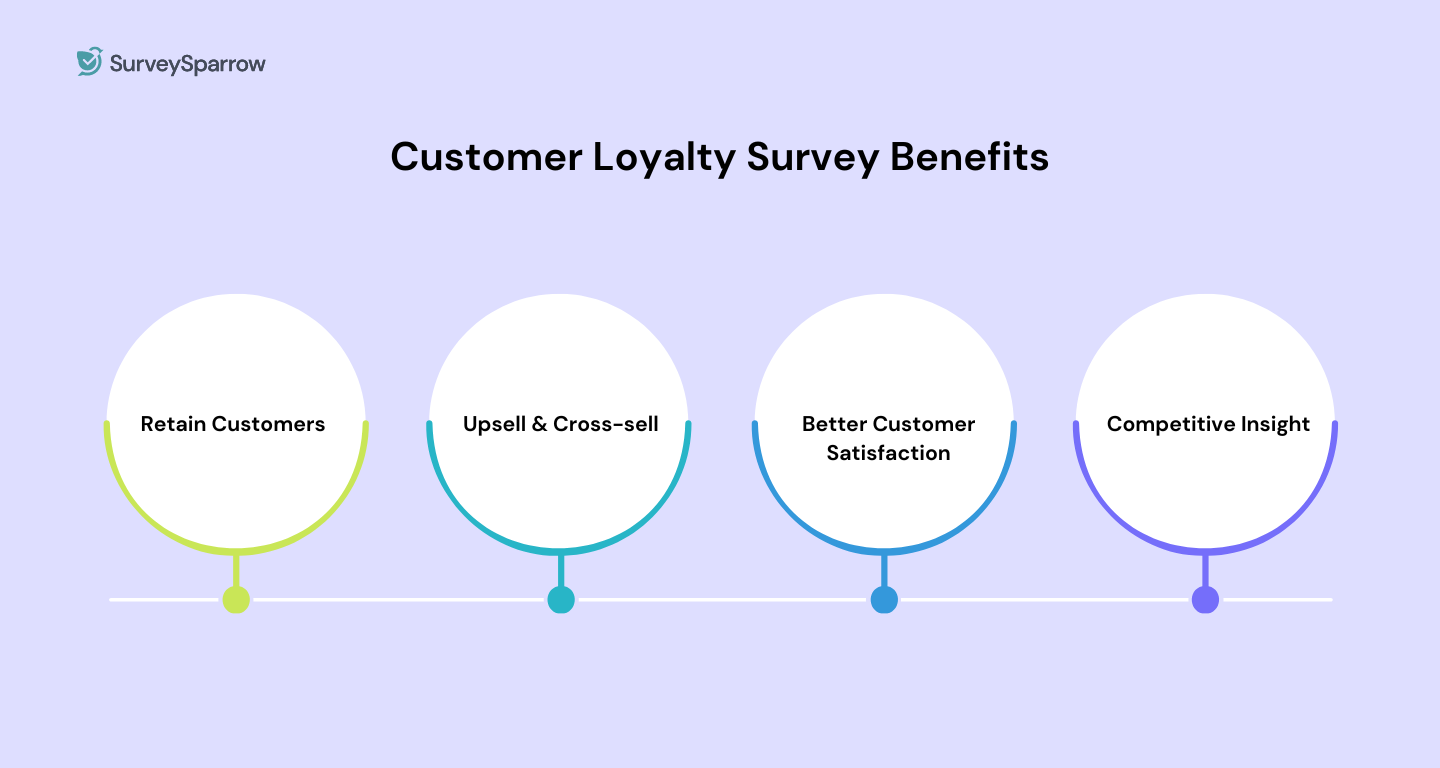
#1. Customer Retention
The backbone of most businesses is having loyal customers who will stay with you through thick and thin. When you have customers who keep giving you their business, it gives a sense of stability.
#2. Ease of Upselling and Cross-selling
While it is important that you always have a new set of leads in the reckoning, it is even more important for you to take care of your existing customers.
An existing customer is more valuable than a new customer. Why? Because they like doing business with you and are more likely to pay a premium for your new products. They will also be easy to upsell and cross-sell as they have a great relationship with you and trust your expertise.
#3. Measuring Actual Customer Satisfaction
While most businesses understand that existing customers are important, the point that they miss out on is overestimating the latter’s reliance on you. In other words, most businesses assume that most of their customers are extremely satisfied with them.
That might not always be the case, and it is certainly the last thing that you should be relying on your intuition for. This is where customer loyalty survey questionnaires play a huge role.
#4. Getting Competitive Information
Asking customer loyalty survey questions will put you in a league separate from most of your competitors. In the customer loyalty survey, you need to ask the right questions so that you can get the details that you are looking for.
You can ask a variety of customer experience survey questions to understand what is going on in their minds. These loyalty questions are vital for cutting down on customer attrition .
In this world where competition is rabid, having loyal customers is the biggest gift any business can want. Thankfully, it is possible to quantify customer loyalty by measuring certain metrics . Here are some ways you can measure customer loyalty through loyalty questionnaires.

1. Net Promoter ScoreSM (NPS®)
By asking a simple question, the NPS® survey provides businesses with a great understanding of a customer’s loyalty. Regardless of which NPS software you use, it is always based on this question:
“How likely are you to recommend our service to your friends?”
The NPS® scale is 0 to 10, and it segments the respondents in the following ways.
- Promoters – Those who give you a score of 9 or 10 are called promoters and they are the ones who not only love your brand but will also go out of their way to recommend you to their friends and family.
- Passives – They give you a score of 7 or 8. These are people who are satisfied with your service or product but will leave you if they find a better offer.
- Detractors – The ones that give you a score of 6 or lower are called detractors. They are the ones who are highly likely to badmouth you on social media or forums. They can do a lot of damage to your brand by sharing their negative experience with their immediate circle and on the internet.
Thanks to the NPS® survey, you can take immediate steps to make amends with the detractors so that they can at least turn into passives. You can convert your passives into promoters as well.
Your NPS® score can be calculated by subtracting the percentage of your detractors from the percentage of your promoters. Please do remember that your NPS® score is the perception of your customers towards your brand, and does not necessarily talk about the quality of your products or services.
Get free access to NPS surveys here! Sign up with your email.
14-day free trial • Cancel Anytime • No Credit Card Required • No Strings Attached
2. Customer Lifetime Value (CLV)
It is considered as the total revenue you can expect from a customer over their lifetime. Not only does it help you identify your high-net value customers, but it also helps you prioritize areas where you need to concentrate on.
The Customer Lifetime Value is also a great metric that your marketers should concentrate on as it helps them understand how much they should spend on acquiring customers. If your customer acquisition value is greater than CLV, then you are a business that is doomed to failure.
3. Customer Loyalty Index (CLI)
The Customer Loyalty Index is a standardized tool that is used to track customer loyalty over a period of time. There are a lot of things that go into successfully arriving at how loyal your customers are. The CLI takes factors like upselling numbers, cross-selling numbers, repurchasing, and NPS® value to arrive at the number.
Here are the questions that are used extensively in CLI:
- How likely are you to recommend our service to your friends and family?
- How likely are you to buy from us again in the future?
The value of CLI is the average score of three responses. It evaluates the answers ranging from 1 to 6, with 1 being “Definitely Yes” and 6 standing for “Definitely No.”

4. Customer Engagement Score
If you want to know how loyal your customers would be, the answer lies in how engaged they are with your brand.
The Customer Engagement Score assigns a score to every customer based on the activity and the usage of their services. It groups customers into different segments to see how it performs against other segments and finds out who are the customers who are more likely to leave.
To track the engagement of these customers, it measures metrics such as activity time, visits frequency, and core user actions.
Try the Best Online Survey Tool
Choose SurveySparrow for 40% more Response Rate
14-Day-Free Trial • Cancel Anytime • No Credit Card Required • Need a Demo?
How to Improve Customer Loyalty
We have told you how you can measure customer loyalty and 11 of the best customer loyalty survey questions that you can use to understand where your customer’s loyalty lies. Here are some tips on how to increase customer loyalty.

1. Connect with Customers
Believe it or not, it is easier said than done. Make sure that your relationship with your customer is not just transactional. Your customers should feel as if they are not just a number for them. How can you do this? Reach out to them regularly to understand if their needs are being met.
Create a community of your customers where you help them out constantly with issues that they have. Use it as a platform to solve the problems that they face not only while using your products, but also to help them improve their business. Your community of customers can be turned into ambassadors for your brand if you use the right techniques.

2. Focus on Customer Experience
There is no way you can provide an excellent customer experience unless you do not have it in your business’ DNA. Everyone from customer-facing roles to executives should know that their ultimate aim is to make customers happy. You should even provide them leeway to take action that will bring delight to your customers.
If you can convince your customers that you provide the best experience among everyone in your niche, they will not find any other reasons to leave you at all. Even a single bad experience can turn a devoted customer away from you. That’s why it is necessary to create policies and procedures to ensure that customers are always taken care of.
3. Incentivize Your Customers to Say
While survey incentives might not work for everyone, the good thing is that most customers will be happy to get something in exchange for their continued business. A good way to keep your customers happy is by rewarding them with some sort of incentive. There are different types of loyalty programs that are in place to ensure that you keep your customers with you.
4. Be Reliable
When you keep your promises to your customers, they are more likely to find you as a reliable partner to do business with. Guess what? That’s an extremely attractive character to have, especially for a business. Business is all about relationships, and one of the most important questions that most people want to know is if someone is reliable to work with or not.
5. Do Not Miss out on the Details
Companies that have a lot of loyal customers do not forget to comb through details. As we mentioned earlier, even a small mistake can put you in a group of businesses they do not want to touch anymore. Do you want to win the hearts of your customers? Then, do not overlook the minutest of things. The customer loyalty survey results can help you discover areas you have missed out on.
How Can SurveySparrow Help in Increasing Customer Loyalty?
Customer loyalty is one of the most important metrics a company needs to measure regularly. If it goes down, then it is an indicator that not a lot of things are going well for the company. It could even be as simple as a terrible onboarding process or the fact that your customer service department takes a few days more than necessary to respond to queries.
If you want to conduct a customer loyalty survey and are looking for the best online survey tool, SurveySparrow is your best bet. With a plethora of stunning features that can make all the difference to your customer loyalty surveys, it can be the game-changer that you are looking for when it comes to understanding how loyal your customers are.

SurveySparrow offers a range of surveys beyond CES and CSAT surveys to help increase customer loyalty. Here are some additional survey types:
1. Customer Effort Score (CES) Surveys
CES surveys assess how easy or challenging it is for customers to complete specific tasks or resolve issues. By identifying areas where customers encounter difficulties, you can improve their experience and keep them coming back.
2. Customer Satisfaction (CSAT) Surveys
CSAT surveys gauge overall customer satisfaction with your products or services. Using a rating scale or smiley faces, you can collect feedback on the satisfaction level of each interaction. Regularly collecting CSAT feedback allows you to address issues promptly and ensure customers remain satisfied and loyal.
3. Net Promoter Score (NPS) Surveys
We have already discussed this earlier in the blog. It focuses on measuring customer loyalty by asking how likely customers are to recommend your business to others. Identify Promoters who will likely refer your business and Detractors needing attention.
4. Customer Feedback Surveys
Collect open-ended feedback to gain deeper insights into customer opinions, pain points, and suggestions. Use this data to make targeted improvements.
5. Customer Journey Surveys
Map the customer journey and collect feedback at key touchpoints. Understand the customer experience from start to finish and identify areas for enhancement.
6. Post-Purchase Surveys
Gather feedback immediately after a customer purchases. Learn about their buying experience and address any issues promptly to ensure satisfaction.
Would you want to access all these survey templates for free?
Sign up with your email for free – the surveys are yours!

Product Marketing Manager at SurveySparrow
Excels in empowering visionary companies through storytelling and strategic go-to-market planning. With extensive experience in product marketing and customer experience management, she is an accomplished author, podcast host, and mentor, sharing her expertise across diverse platforms and audiences.
You Might Also Like
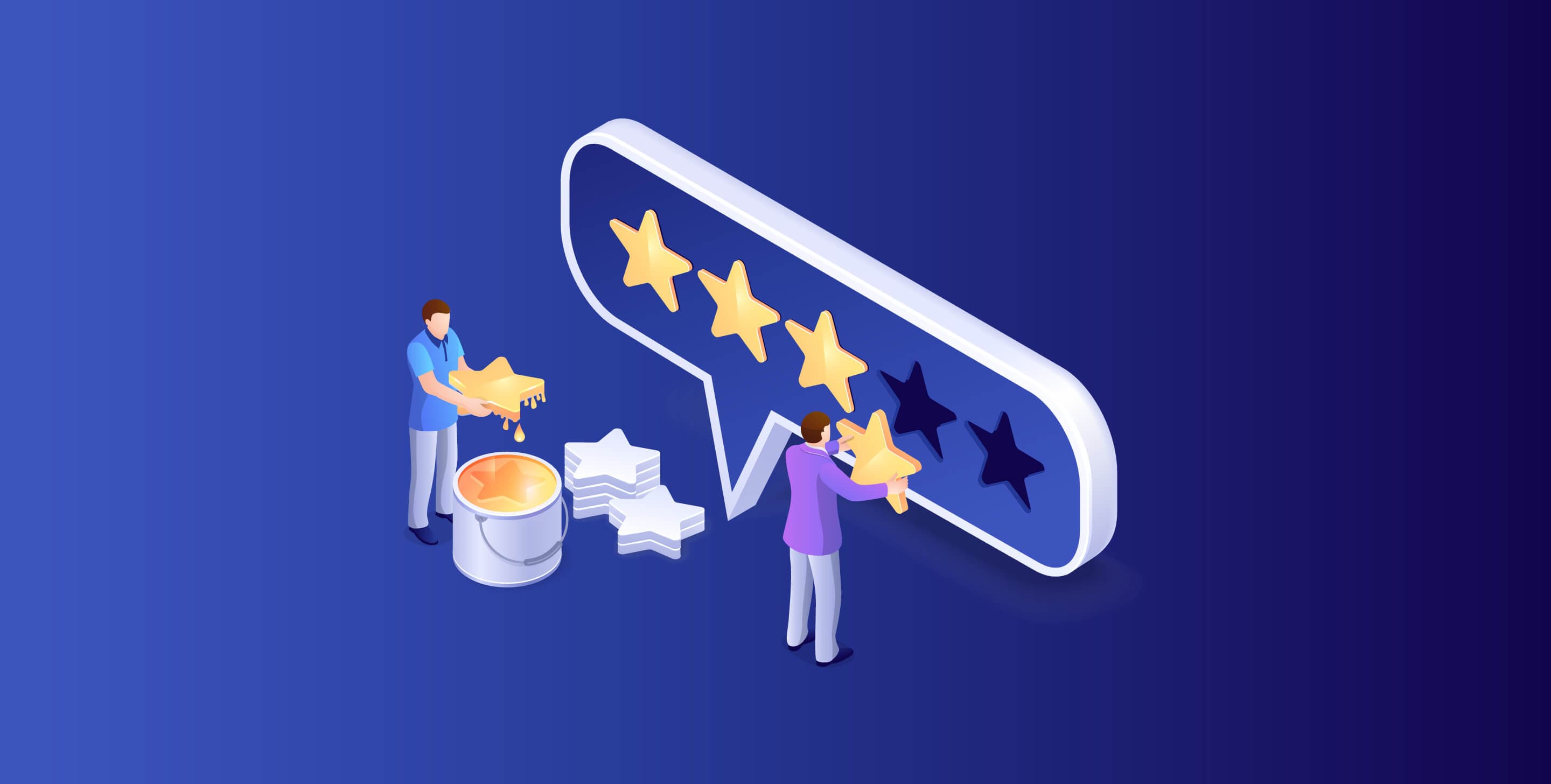
Survey Introduction Examples With 9 Tips That Actually Work

Customer Experience
How to Improve Net Promoter Score: A 5 Step Guide

Survey Tips
Survey Invitation Email: 20 Useful Tips with Examples

100 Stats that Prove the Importance of Customer Satisfaction, Retention, & Loyalty
Turn every feedback into a growth opportunity.
14-day free trial • Cancel Anytime • No Credit Card Required • Need a Demo?
Customer loyalty questionnaire and template examples
With our customer loyalty survey templates, you can discover how committed customers are to your brand and use this knowledge to gain their trust and keep them satisfied.
Get started
Over the long run, customer loyalty helps companies thrive. To grow the pool of customers committed to a brand, it's imperative to continually evaluate how happy they are. Customer loyalty questionnaires make that easier. SurveyPlanet is here to help you create a customer loyalty survey that will deliver needed insights to keep customers coming back for more.
In the long run, customer loyalty helps companies thrive. To grow the pool of customers committed to a brand, it's imperative to continually evaluate how happy they are. Customer loyalty questionnaires make it easier to retain their business. SurveyPlanet is here to help you create a survey that will deliver the insights you need to keep customers coming back for more.
What is customer loyalty?
It is the phenomenon of current consumers consistently choosing a company's services or products over those of competitors—whose attempts to persuade them via prices or availability are not successful.
Loyal customers trust a brand and continue to give it their business because they understand the value of its products. Plus, they tend to recommend products and services to other people. In other words, they are loyal customers who use and value products and services and act as advertisers.
Types of loyal customers
Just as each customer is a unique individual, they can have different reasons for being loyal to your product or services. Basic categorizations that can help you understand these differences and aid in gaining customers' trust include:
- Price loyalty: The main reason customers choose a product is because of its price. The danger with this type of loyalty is that if a competitor offers a more affordable price, you may lose the customer.
- Convenience loyalty: Customers are loyal because of accessibility. This may be because of location, shipping speed, or 24/7 availability of your services.
- Loyalty program: These types of loyal customers are more attracted to the rewards and conveniences that your loyalty program offers than to specific products or services.
- Devotion: These are the type of loyal customers your brand needs and wants. Devoted customers promote your brand, repeat purchases, and are willing to pay a premium price for products or services.
Why a good customer loyalty survey is important
Customer loyalty is crucial because acquiring new patrons actually costs far more than retaining old ones. Therefore, it is vital to create quality customer loyalty surveys that measure current performance. With strong brand allegiance, a company’s future is more secure. Loyal customers help a business to consistently thrive, which alleviates the worry of taking a big hit in the marketplace during a downturn.
Investing time and energy in a brand-loyalty questionnaire for current customers not only lessens the chance that they abandon you but also creates an opportunity for further growth.
Devoted customers become walking advertisements by sharing how much they enjoy a brand—or a particular product—which will convince others to give it a try.
In the end, loyalty leads to higher profits. Conducting a customer retention survey is an easy way to pinpoint what exactly makes customers happy—or not. With this information, it is easier to strategize about how to give customers even more of what they like.
Customer loyalty index questionnaire
Customer loyalty is one of the most important metrics that any business tracks. It is a statistic that informs about how likely customers are to keep shopping with a company—as opposed to switching to a competitor. Ideally, the number should be as high as possible. And there are ways to increase this number without making major changes to a business model.
The Customer Loyalty Index (CLI) is a standardized tool used to track customer loyalty (though it can't really be summed up in a single number). This is why the CLI takes into consideration multiple factors, such as Net Promoter Score (NPS), upselling, repurchasing, and other customer loyalty metrics.
Let's examine some of them.
How do you measure customer loyalty?
There are several ways to gauge the devotion of consumers to a brand:
- Customer lifetime value: The CVL measures how much value an individual will bring to a company over their lifetime. Instead of assessing individual purchases, this number helps project a company's future success.
- Repeat purchase rate: Customer loyalty levels can also be measured by determining the RPR. This is the percentage of the entire client base that conducts repeat business with a company.
- Customer satisfaction score: The CSAT measures how pleased customers are with their overall experience with a brand or a particular interaction or experience. However, happy customers don’t always lead directly to revenue growth, so this isn’t necessarily the most suitable option for all types of surveys.
- Net promoter score (NPS) A questionnaire gauging how likely customers are to recommend a company’s services or products that asks respondents to answer on a scale of 1 to 10. Those who score a brand 6 or lower are considered detractors, while those who answer 7 or 8 are passive, and those at 9 or 10 are promoters. NPS is calculated by subtracting the total number of detractors from the total number of promoters, giving the percentage of customers likely to recommend a company.
Brand loyalty survey questionnaire and survey
A customer loyalty survey, also known as a brand loyalty questionnaire, helps evaluate customer satisfaction, trust, brand esteem, and the perceived value and quality of a company. Asking customer retention survey questions related to these subjects can provide insight into the areas that drive devotion to a brand.
Brand surveys help you stay on top of what customers think by investing some time into learning more about them. Building a solid brand is a long-term process and customer satisfaction and brand loyalty questionnaires help you accomplish that.
How to use brand-loyalty questionnaires advantageously
Once a brand-loyalty questionnaire has been sent out, start preparing for the analysis phase. When reviewing the collected data, look for trends in different areas. First, examine questions about satisfaction. These will tell whether customers are overall confident with your service or not.
Also, look at individual questions that pinpoint areas of satisfaction related to customer service or a particular product. Additionally, comparing results from a customer trust questionnaire with those from product surveys and customer satisfaction surveys can greatly help in market research .
Next, evaluate customer retention survey questions about trust in the company. These will communicate whether customers have confidence in your brand and why they do (or don’t). Customer loyalty survey questions related to brand esteem also provide insights into how customers feel about a brand’s familiarity and recognizability.
Customer retention survey questions and examples
With help from SurveyPlanet, you can create brand loyalty survey questions like:
- If a competitor is selling the same products in a more convenient location, how likely are you to change your purchasing decisions?
- How likely would you switch brands if a competitor was cheaper?
- Do you find our brand high-quality?
- Do you trust our brand?
- Compared to our competitors, where do you rate our products/services on a scale from 1 to 10?
- How likely would you recommend our products to others?
- Would you purchase our product again or would you rather try our competitors' product?
- How likely are you to upgrade or add services with us?
- How proud are you to be a customer of our brand?
- Would you consider us as a first recommendation to others for similar needs?
- Are you planning to continue with our services in the long term?
- Will you consider our products/services for your future needs?
- In the next six months, do you plan to purchase any of our products/services?
- Do you feel a personal connection to our brand?
Evaluate the customer loyalty survey results
Finally, evaluate how consumers perceive quality and value. Do they find your services and products a good value? Are your products considered of high value compared to competitors?
Analyzing customer loyalty questionnaires will tell you which aspects of the business produce the most loyalty—and which don’t. Once a company's problem areas are identified, they can be addressed with action plans that will make consumers more devoted and satisfied.
If your company offers a loyalty reward program, feel free to include survey questions about it. The results will give insight into how effective the program is at retaining business.
Customer loyalty program survey questions
- Have you ever participated in a customer loyalty program before?
- How important is it for you to receive rewards or benefits from a loyalty program?
- How often do you make purchases from the same company?
- What types of rewards or benefits do you find most appealing in a loyalty program?
- Have you ever redeemed rewards or benefits from a loyalty program? If yes, how easy was the redemption process?
- Would you be more likely to continue doing business with a company if they offered a loyalty program?
- Are loyalty programs effective for companies to build and maintain customer loyalty?
- How would you rate the usefulness of the loyalty program you are currently enrolled in (if applicable)?
- Do you feel loyalty programs provide equal benefits to all customers, regardless of how much they spend?
- Would you recommend a company's loyalty program to a friend or family member?
Explore customer loyalty survey examples and start benefiting with SurveyPlanet
With SurveyPlanet’s customer loyalty survey examples and templates, conduct an effective survey that provides access to customers’ honest feelings about your products and services. The results can be used to make better-informed decisions about improving your business and increasing customer loyalty. Sign up to create an excellent survey and explore how to inspire even higher satisfaction amongst your loyal customers.
Sign up now
Free unlimited surveys, questions and responses.

Contact Us (315) 303-2040
Elevate your brand's performance with data-driven insights
Learn how to unlock the true heartbeat of your brand's success by harnessing the power of surveys to measure brand loyalty.
Request a Quote Read the Guide
- Market Research Company Blog
How to Measure Brand Loyalty with Market Research
by Devan Grant
Posted at: 8/31/2023 12:30 PM
Measuring brand loyalty is critical for the success of any company. Scratch that, it’s imperative .
Brand loyalty (not to be confused with customer loyalty , which is a separate concept but equally as important) ensures the future return of customers time and time again.
With customers that are loyal to your brand, you won’t have to waste time with expensive marketing or promotional campaigns.
Instead, you can focus your precious time on building out your brand to attract even more long-term customers.
In this article, our market research company discusses the finer details about what brand loyalty really means as well as 4 key metrics that help measure brand loyalty in a tangible way.
What is Brand Loyalty?
Brand loyalty is defined as the positive association that a consumer attaches to a particular brand, regardless of price or any deficiencies.
If someone is loyal to your brand, that means they are dedicated to purchasing from you regardless of how you stack up against competitors .
Brand loyalty can be demonstrated verbally as well, like through positive word-of-mouth support.

Brand Loyalty vs. Customer Loyalty
Brand loyalty is bigger than customer loyalty because it’s more than just repeat customers. It’s positive associations and memories with a brand.
A large part of a brand’s success depends on its ability to attract customers who consistently purchase its products.
It’s customers who return because they genuinely think your brand is superior to the competition.
Constantly looking for new, one-time shoppers can put a strain on your marketing efforts, and surely won’t be worthwhile in the long run.
I mean, remember the name of that one-hit-wonder? Yeah, neither do we.
That’s why you need loyal customers, who show up time and time again.

Brand Loyalty Metrics to Measure
Gauging brand loyalty can prove to be a little tricky. And that’s because there isn’t one specific metric that quantifies brand loyalty on its own.
Instead, there are several metrics that can be added up to paint a bigger picture.
Metric #1: Customer Satisfaction
Getting a read on customer satisfaction lets you know if your brand is meeting your customers’ expectations.
It’s important to know not only how satisfied your customers are, but also why they feel the way they do.
Loyal customers make repeat purchases, but that doesn’t mean much if you don’t understand exactly what it is about your brand that keeps these loyal customers coming back.
In this video, our team shares what they believe to be the most important questions to ask in a customer survey.
Metric #2: Brand Value
If a customer continues to purchase from you because you have the lowest prices, that doesn’t always equate to brand loyalty.
The perceived value of your brand’s product or service is what drives loyalty. Perceived value is a customer’s opinion of how your product or service relates to them specifically.
Certain luxury vehicle manufacturers have built loyal customer bases, not because of a low price tag, but due to their customers seeing them as a high-quality, high-value brand.
Metric #3: Brand Awareness
If people aren’t aware of your brand, to begin with, how are they going to be able to develop a connection with you?
Measuring brand awareness is a way to quantify the reach your brand has.
Increasing awareness of your brand increases the number of people who could become brand loyal customers.
Figuring out who is (and just as importantly, who isn’t) aware of your brand can help you identify steps you can take to make your brand more recognizable.
Recommended Reading: How to Create a Baseline for Awareness and Interest
Metric #4: Brand Trust
Trust is a powerful thing. Customers will not be loyal to your brand if they cannot trust that you will do right by them.
Whether you’re a pharmaceutical company dealing with an individual’s health and well-being, or a financial institution in contact with sensitive information, ensuring a level of trust between your brand and your customers is essential in maintaining your customers’ loyalty.
Understanding your brand’s trustworthiness can help you adjust messaging appropriately, and assure your customers that you are a brand worthy of trust.

How to Measure Brand Loyalty in a Questionnaire
Measuring brand loyalty with surveys or questionnaires involves designing questions that capture various aspects of a customer's relationship and commitment to a particular brand.
As discussed, brand loyalty is a multidimensional concept that cannot be measured with one metric. Therefore, it's essential to include many different questions that cover various aspects of your brand, products, and services.
Here's a step-by-step guide on how to create a questionnaire to measure brand loyalty:
Step 1: Define the Dimensions of Brand Loyalty
Identify the dimensions of brand loyalty you want to measure. These could include behavioral, attitudinal, and emotional aspects. Common dimensions include repurchase intention, willingness to recommend, emotional attachment, and preference over competitors.
Step 2: Design the Survey
Our online survey company recommends incorporating various question types to capture different aspects of brand loyalty. This can include:
- Likert Scale Questions: Use a 5-point or 7-point Likert scale to gauge respondents' agreement or disagreement with statements related to brand loyalty.
- Multiple-Choice Questions: Offer options for respondents to choose from, such as frequency of purchase, reasons for choosing the brand, etc.
- Open-Ended Questions: Allow respondents to provide detailed explanations or examples for their loyalty or lack thereof.
- Semantic Differential Scale: Ask respondents to rate the brand using bipolar adjectives (e.g., Reliable-Unreliable, Trustworthy-Untrustworthy) on a scale.
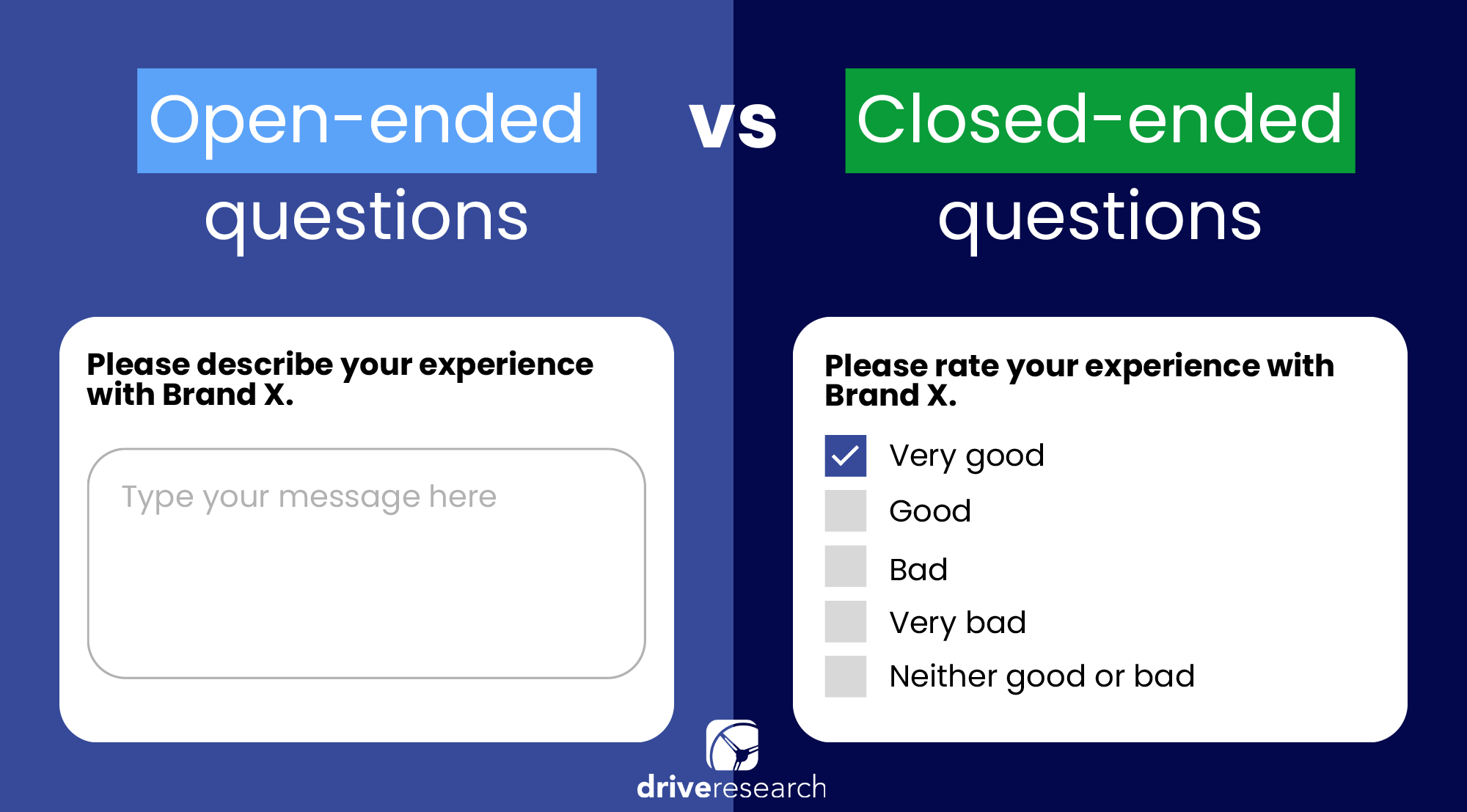
Step 3: Collect Survey Responses
But wait...before distributing the questionnaire, conduct a soft launch or pilot test with a small group to identify any issues with wording, clarity, or question order. Make necessary adjustments based on feedback.
Once the initial soft launch checks out, send the survey to the remaining sample until your goal number of responses is reached.
Step 4: Take Action
Once you've collected responses, analyze the data and feedback.
Based on the insights, create specific, actionable strategies to improve brand loyalty. These strategies could range from improving the user interface of your website to launching loyalty programs or offering personalized recommendations.
Consider making the brand loyalty survey a regular part of your customer feedback strategy. Regular surveys can help you track changes over time and stay attuned to customer sentiments.
Using A Third-Party Research Company to Measure Brand Loyalty
You’ve learned how to define brand loyalty as well as how to quantify it. Now what?
Take the time to think about what goals you and your brand have, both short and long-term. Get an understanding of the key performance indicators that matter most in regards to your brand, and your business.
When you think you have a good idea of what you want to learn, reach out to a third-party research company .
Not sure exactly what KPIs you want to measure, or how to go about measuring them? That’s okay, too!
Market research companies, like Drive Research , have the expertise to design surveys and discussion guides that can get you the data you need.
In short...
A properly executed market research study by a third-party company will provide you with the necessary information to adjust your business plans, and draw customers back to you time and time again.
Recommended Reading: Benefits of Using a Third-Party Market Research Firm
Measure & Quantify Brand Loyalty With Drive Research
Drive Research is a national market research company specializing in various quantitative and qualitative methodologies. Our team of senior market research professionals has the skill and know-how to measure key metrics to quantify brand loyalty.
Interested in learning more about our services? Contact us today by filling out the form below or emailing [email protected] .

Devan Grant
Devan's love for learning serves him well as a market research professional. With two years of both quantitative and qualitative research in the healthcare space under his belt, he knows what it takes to answer some of the toughest market research questions.
Learn more about Devan, here .

Categories: Online Surveys Consumer Behavior
Need help with your project? Get in touch with Drive Research.
View Our Blog

5 Key insights for building an effective brand loyalty questionnaire
- Written February 23, 2016
- by Sofie Nelen
Improve how you measure loyalty with surveys
The first thing people think of when they hear your name or when they come across your logo or what your customers feel, when they are buying your products. That’s brand awareness. The positive result of brand awareness is brand loyalty and not unimportant: one of the biggest factors for your brand’s success. Loyal customers that regularly buy your products, will help you in your competition with other companies in your field.
Did you know that only the color of your logo can boost your brand recognition by 82%? ( This study by Xerox tells you all about the power of color for your brand) That’s why building a strong, recognizable brand can have significant benefits for the overall growth and development of your business.
To learn how well your brand is perceived and to make smart strategic marketing decisions, you have to compete and measure up to other brands. Even with a short brand awareness survey, you’ll quickly learn how your brand is perceived compared to your competitors.
Understanding customer brand perception can make or break your business
Brand awareness is a positive start, it’s a well-known fact that people are willing to pay for products and services, based on their perceived value. But brand awareness does not guarantee brand loyalty from your audience.
If customers choose your brand based on accessibility or low price, you have low brand value. It simply means your brand is similar to commodity and can be easily changed. Customers are likely to substitute your product/service for something more convenient or better priced when the opportunity arises.
In order to build a brand that is more than a commodity, you need to start by proper measurement of your customer’s perception of your brand. The insights will help you nurture brand loyalty. And this is of course where survey tools come in.
Brand loyalty in its essence
Brand loyalty comes down to the likeliness of customers repurchasing your products or services rather than choosing your competitors. And not only because of the accessibility of the product. Customers are willing to pay higher prices, even if the product is of lower quality than that of a competitor. No less than 44% of millennials say they are loyal to brands they buy. In fact, 52% will choose quality over price! (via IRI )
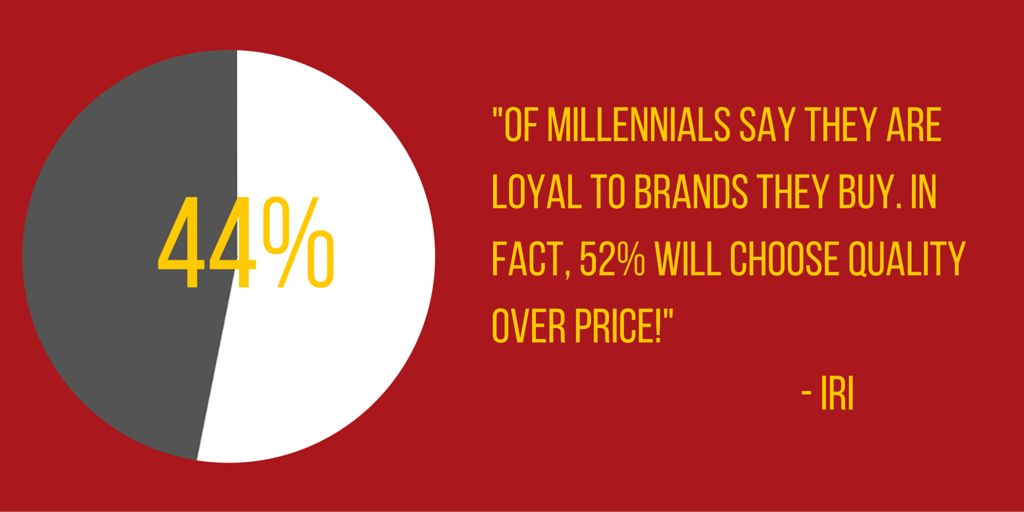
Don’t forget, this loyalty is only a part of the entire value of your brand. This value, also known as brand equity , is further measured by brand identity , brand attributes, and associations as well as the perceived quality of your brand.
The most effective way to get a clear insight in your brand loyalty and equity, are short and to the point surveys. They’ll give you the right insights to further build your brand awareness, focussing on your target audience’s needs and will help you guide your marketing efforts to create a higher perceived quality. And, in the end, help you in nurturing strong brand loyalty with your customers.
Measuring brand loyalty with surveys: 5 necessary metrics
Surveys are the perfect tool to measure loyalty to your brand. These 5 metrics will get you the right insights:
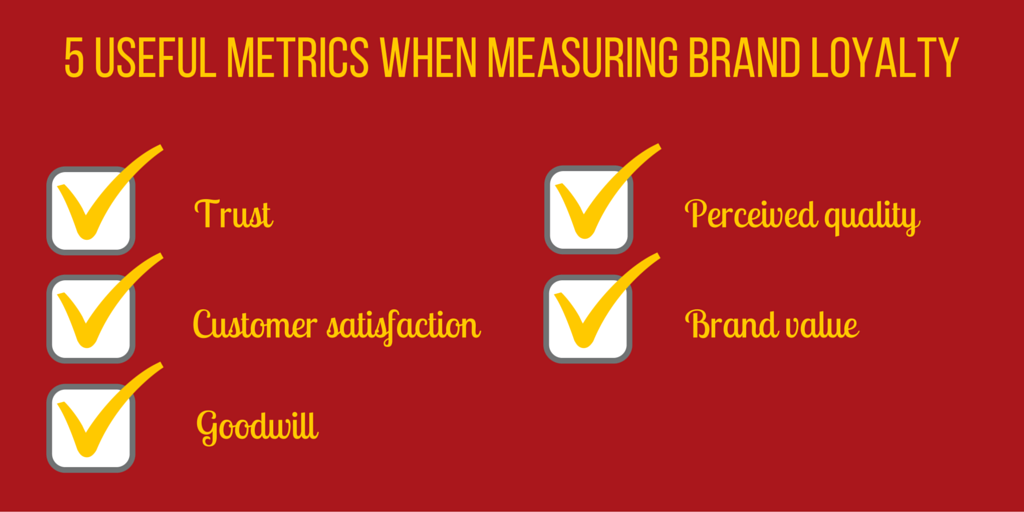
1. Measure trust
In this digital age, we ask a lot of our customers, we’d like to know their e-mail, their birthday, … as much as we can really. Yet, no less than 48% of consumers admits they are suspicious about how their data is used. (via Verint )
So especially when you’re a brand handling personal or even sensitive information it’s important to know your audience trusts you and how you can improve on that trust.
Get to this info with questions such as:
How well do you trust our brand? Rate on a scale of 1 to 10, where 1 is not at all and 10 means you trust us completely.
What can we improve to keep your trust? (Add multiple choice options referring to the specific services you provide)
- Our communication via the website
- Our communication via our social media
- Our customer support
2. Measure customer satisfaction
Measuring customer satisfaction will get you fundamental insights to build your strategy on. Find out if what you’re doing is working, if it’s meeting or even exceeding your audiences’ expectations.
Ask questions such as:
- How happy were you with your purchase? Rate from 1 to 5 stars, where 1 is not happy at all and 5 is extremely happy.
- How likely are you to purchase one of our products in the next 30 days?
- How likely are you to recommend us to family or friends?
Measuring satisfaction is a great way to get started. If this is where you’re at, take a look at these 10 metrics to measure customer satisfaction and get started the right way!
3. Measure goodwill
People are attracted to particular brands, their esteem for your brand is not the same as awareness of your brand. So it’s useful to focus on goodwill specifically when surveying about brand loyalty. If for example a brand is well known, but for all the wrong reasons, it’s pretty clear this won’t improve brand loyalty. When measuring goodwill, keep in mind that this should be about the customers’ positive sentiment towards your company.
Ask your questions with an emphasis on how a respondent feels towards your brand, rather than asking if he knows about your brand:
- Would you prefer our brand over that of a competitor?
- If you think of our brand, how positive do you feel towards it?
4. Measure perceived quality
How well a product or service is able to fulfill the expectations of your customer is translated into the perceived quality of your brand.
Focus on questions that give you ratings to easily know on what products or services you have room for improvement:
- How qualitative was our delivered service? Rate from 1 to 5 stars, where 1 is unsatisfactory and 5 perfect.
- How reliable do you feel our brand is? (this is very similar to the trust-question we asked above. These questions overlap but, asked in the right context can still give you new insights)
5. Measure brand value
Close to the perceived quality is the value of your brand. But, even if your perceived quality is good, it doesn’t necessarily mean that your customers feel your brand is valuable to them. If a better alternative arises for example, or if the price for the product is perceived as too high.
Perceived value can be measured with questions like:
- How likely are you to switch to another brand if this alternative was cheaper?
- How likely are you to choose our brand compared to another if they were both sold in the same location?
3 Quick tips for writing effective customer loyalty questions
- Cut to the Chase: Be Direct With Your Questions Limit your surveys to 5 or 7 questions. The shorter and more direct they are, the easier it is for respondents to find time to reply and give honest answers rather than getting bored and clicking through to get it over with.
- Easy Does it: Only Ask for One Thing Per Question We know its tough when you want to keep your survey short and still have tons of information you’d like to know. Get creative with your questions and focus on what really matters. Respondents that actively take part in a survey can be sent a follow-up survey with more additional questions if necessary. This approach works well when spread over a long enough period.
- Minimum effort for your respondents: Use Close-Ended Questions Yes and no, that’s easy, no confusion no extra explanation needed. These types of questions are perfect to get started. Work with skip logic to personalize the following questions where you may go deeper into the personal opinion of your respondent. For more tips on optimizing that survey, take a look at our guide on how to select the right types of survey questions .
5 Brand loyalty question examples
To get quickly started with a Brand Loyalty questionnaire, it might be helpful to start from these 5 general example questions and personalize them to fit your data needs.
- What did your customers like about your brand or product/service?
- What didn’t they like?
- Are they willing to recommend your brand to a friend or colleague?
- How likely are they to come back for another purchase?
- How likely are they to choose your brand over another?
Considerations when selecting an online survey platform
By using online surveys for this type of research, you’ll get quick feedback without asking too much in time and effort of your respondents. Gathering the information digitally improves the workload for your business as well. Especially when working with brand loyalty, it’s helpful to have a tool that allows you to insert all those great aspects of your branding into your questionnaires.
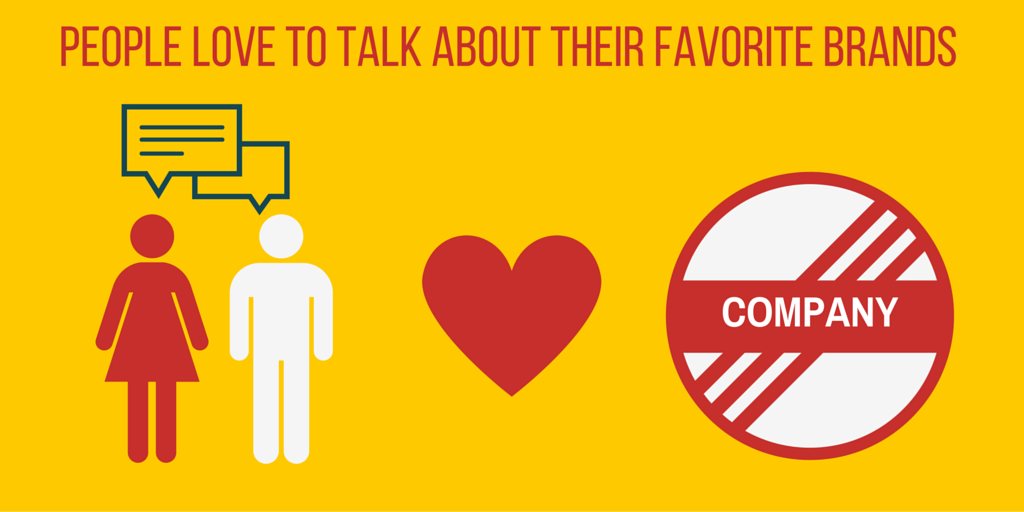
In fact, to kick your respondent’s brand experience up a notch, don’t be afraid to add fun and entertaining elements into the survey. Instead of offering an incentive, engage with them by making them play with a digital scratch card or let them win by using an animated slot machine, …
On this and much more, we have templates, playful widgets and tons of tips and tricks waiting for you in the Pointerpro app. Every questionnaire is different, and our aim is to offer powerful features for building entertaining surveys .
The ease and added fun-factor of Pointerpro, will help you make those surveys into a powerful branded masterpiece. Get started with what you’ve learned here, sign up for free and go build a strong brand that your customers will love!
Interested in more figures on brand loyalty? We got our inspiration via Brandon Carter in this blogpost by Access development .
Create your own assessment for free!
About the author:.

Sofie Nelen
One response.
Quite informative and used useful. Thanks
Want to know more?
Subscribe to our newsletter and get hand-picked articles directly to your inbox.

The Pointerpro newsletter brings you the latest market trends and will give you an overview of compelling testimonials from our community. Register now!
Popular Articles
Get to know us.
Contact us Careers (We’re hiring!) Affiliate marketing
Help Center
Certifications.

ISO 27001 Certified
Careers (We’re hiring!)
Let’s stay in touch, we’d like that
Brand Loyalty Survey
Building a brand loyalty will help you develop a core customer base who will repurchase from you again and again. keep measuring it periodically so that you can improve and nurture based on the insights gathered. measure trust, customer satisfaction, goodwill, perceived quality and brand value..
1 minute to complete
Eligibility
There is no specific eligibility criteria to fill the Brand Loyalty Survey.
Questions for Brand Loyalty Survey
How well do you trust our [Brand Name]?
What can we improve to keep your trust?
*choose all that apply
- Our communication via Emails
- Our communication via Webinars
- Out communication via social media
- Our customer support
How happy were you with your purchase?
How likely are you to recommend us to family and friends?
Would you prefer our [Brand Name] over that of a competitor?
How reliable do you feel our [Brand Name] is?
How likely would you be to switch to another brand if this alternative was cheaper?
Surveys Similar to Brand Loyalty Survey
- Customer Satisfaction Survey
- User Experience Survey
- Product Loyalty Survey
- Customer Engagement Survey
Here are some FAQs and additional information on Brand Loyalty Survey
What is brand loyalty, brand loyalty refers to the extent to which a customer is willing to purchase a product or service from a particular brand, and is not willing to switch to another brand, even if the price or quality of the product offered by the other brand is better., what are the benefits of brand loyalty, there are several benefits of brand loyalty, including increased sales and revenue, increased market share, and increased customer lifetime value., what are the factors that contribute to brand loyalty, quality of products and services & value for money., want to use this template, loved by people at home and at work.

What's next? Try out templates like Brand Loyalty Survey
1000+ templates, 50+ categories, want to create secure online forms and surveys, join blocksurvey..
- The Platform
- Retention Marketing Platform Access shared data, connected experiences & retention tracking
- Our Integrations
- Platform in Action
- Product Releases Hub
- Our Products
- SMS Reach shoppers anywhere with mobile experiences that convert.
- Reviews & UGC Collect and display customer content across the buyer journey.
- Loyalty & Referrals Create custom-tailored loyalty and referral programs.
- Subscriptions Boost recurring revenue with easy-to-add subscription offerings.
- Email Drive more engagement with personalized, eye-catching emails.
- Our Customers
- Case Studies Find out what our customers love about our platform.
- Customer Success Meet the team that ensures you get the most out of Yotpo.
- Winning with Yotpo
- Resources Learn how to drive retention rates through the roof.
- Is Typing Email & SMS inspiration. By marketers, for marketers.
- Yotpo Blog Get the latest news and insights from the team at Yotpo.
- Ebooks & Guides Deep dive into all the essential topics about retention.
- Free Tools Analyze, calculate & generate with our free retention tools.
- Videos & Webinars Watch video tutorials from eCommerce retention experts.
- Help Center
- Yotpo Community
- Become a Partner
The State of Brand Loyalty 2021: Global Consumer Survey
Last updated on January 7, 2024
“Brand loyalty is dead” seems to be a commonly accepted truth in the eCommerce industry these days…
Articles from the past several years are rife with writers lamenting the “decay of customer loyalty,” as well as studies claiming record-low numbers of brand loyal consumers.
Many “commonly accepted truths” about the retail industry, however, were thrown into question with the onset of COVID-19. Back in March 2020, we polled 2,000 consumers to see the effects of the pandemic on consumer shopping habits. We found that even just a few weeks into our new normal, shopper behavior was already beginning to evolve.
Our latest study of 3,800 respondents across four different demographics (Gen Z, Millennials, Gen X, and Baby Boomers) and three different geographies (US, UK, and Australia) reveals among the many changes in shopper behavior due to COVID-19, consumer loyalty has actually gone up year-over-year from 2019 to 2020.
Read on to discover:
- Just how much loyalty rates have gone up from 2019 to 2020
- What today’s shoppers are willing to do for a brand they’re loyal to
- The specific rewards consumers want and expect from a loyalty program
- What your brand can do to take advantage of this massive upsurge in customer loyalty
Respondents are more brand loyal YoY
In 2019 and then again in 2020, we asked shoppers the same set of questions related to brand loyalty.
When asked to rate their brand loyalty compared to one year ago, the number of survey respondents who rated themselves “more” brand loyal actually went up from 24.0% in 2019 to 26.4% in 2020. Those who rated themselves as “less” loyal, meanwhile, remained steady at around 13%.
Respondents are loyal to a greater number of brands
The number of respondents who said they were loyal to “1 to 5 brands” went down from 2019 to 2020 (59.7% to 54.7%) as did the number of respondents claiming to be loyal to no brands at all (5.6% to 2.7%.)
How was this change reflected in the data? Those claiming to be loyal to “6 to 10 brands” went up from 2019 to 2020 (26.2% to 31.1%), as did those loyal to “11 to 20 brands” (6.2% to 8.0%), and “20+ brands” (2.5% to 3.6%).
Respondents will go the distance for brands they love
When asked what sort of actions they would be willing to take for brands they’re loyal to, nearly 68% of 2020 survey respondents said they’d join the brand’s loyalty or VIP program, up from 59.8% in 2019 . Similarly, those willing to spend more on a brand if even cheaper options existed skyrocketed from 34.5% in 2019 to 56% in 2020.
This dramatic increase in brand loyalty is attributed to the effects of COVID-19
With nearly 30% of overall respondents — and 36.3% of Gen Z respondents in particular — saying they’ve become more loyal to brands to help support them during this difficult time, we can see the direct effect that COVID-19 has had on consumer loyalty and buying behavior.
Consumers are more emotionally invested in their favorite brands now than they have been in the past , viewing the shopper-brand relationship as more than just a transactional exchange. This also helps explain why, in 2020, survey respondents were more likely to spend more on a brand they’re loyal to; it’s no longer just about the money.
What can brands do to nurture customer loyalty?
Be vocal about the causes that matter to you.
When asked if they were more inclined to be loyal to a brand whose values aligned with theirs, a whopping 84.3% of respondents said yes. Being more vocal about your brand values can play out in myriad different ways, including:
- Creating a page on your website that features a cause, charity, or value that is close to your brand’s heart. Essential oils brand Aromatherapy Associates, for example, proudly touts their B Corp Certification on a dedicated page on their site.
- Offering important resources to help your shoppers get involved. Click on the “Activism” section on Patagonia’s website, and, based on your location, you’ll be shown grassroots environmental activist groups in your area.
- Finding new ways to be a part of an important and ongoing dialogue. Intimately, which makes underwear for disabled folks that is both “functional” and “fashionable,” has a section on their site called “Stories By You” , where community members share stories, advice, tips, resources, and more.
- Enabling donation through your loyalty program . Men’s grooming brand Blind Barber integrated eCommerce donation solution ShoppingGives with their Yotpo loyalty program to incentivize customers to donate to Operation Underground Railroad by rewarding them with one rewards point per every dollar donated.
Turn your loyal customers into VIPs
We asked survey respondents in 2019 and then again in 2020 what they wanted out of a loyal program other than free shipping and discounts which, in today’s world, are considered a low bar.
Two distinct responses, “early access to sales” and “early access to new products,” shot up considerably from 2019 to 2020 — 42.0% to 60.1% and 30.3% to 50.8%, respectively. “Offers and recommendations tailored to you” also went up, from 32.7% to 38.9%.
The main takeaway? Your customers actually do care about more than just free shipping and discounts when it comes to your loyalty program ; for many, getting a VIP experience — early access and personalized recommendations — has become significantly more important since 2019.
What does this look like in action? Body positive bra brand ThirdLove created a tiered VIP loyalty program, “Hooked,” that is free to join, and focuses on customers’ lifetime spend, so members can still get rewarded even if they purchase infrequently, as is often the case in the lingerie industry.
ThirdLove’s tiered VIP loyalty program, Hooked.
As members climb the tiers, from Admirer, to Enthusiast, to Devotee, they unlock rewards like “early access to new arrivals,” “exclusive seasonal offers,” “limited edition product access,” “annual birthday gift,” and other benefits that go beyond just the transactional, focusing instead on exclusivity and the customer-brand relationship.
Replicate the in-store experience onsite
With so many stores around the country temporarily or even permanently shuttered due to COVID-19, creating an onsite experience that is as similar as possible to the one a customer might have shopping in-person is another essential piece of the puzzle when it comes to keeping your loyal customers engaged. You can do this by displaying reviews and visual UGC prominently across your homepage, product pages, and checkout page.
When shoppers land on organic skincare brand Green People’s website , they are greeted by an onsite gallery filled with photos from Green People’s Instagram feed, all with “buy now” options, helping to recreate the “discovery” experience that a customer might have upon walking into a store and taking in all of the products on display.
After clicking through to a specific product, not only are they shown customer reviews, but they are given the option to filter reviews by the topics most relevant to their concerns, such as “irritation,” “ingredients,” “fragrance,” and so on, replicating the exchange they would be able to have in-store with a knowledgeable salesperson.
Finally, as they continue through to the checkout page, they are shown personalized product recommendations based on what other customers also purchased.
Top takeaways
Contrary to what many in the industry hold as common knowledge, customer loyalty is actually on the rise. This change in consumer behavior is directly attributable to the impact of COVID-19 on the retail industry:
- Loyalty rates are up because of COVID-19: 30% of overall respondents say they’ve become more loyal to brands to help support them during this difficult time.
- Customers will do a lot for brands they’re loyal to: 67.6% of survey respondents said they’d join the loyalty or VIP program of a brand they’re loyal to (compared to 59.8% in 2019), while 56% said they’d spend more on a brand they’re loyal to even if cheaper options existed elsewhere (compared to 34.5% in 2019).
- Your loyalty program members want exclusive access: When asked what they wanted out of a loyalty program, 60.1% of respondents said they wanted “early access to sales” (compared to 42.0% in 2019) and 50.8% said “early access to new products” (compared to 30.3% in 2019).
As we head into 2021, make sure to invest in emotional over strictly transactional relationships with loyal customers to keep them engaged and to drive both retention and CLTV.
Learn how Yotpo can help your brand nurture and engage loyal customers with reviews , visual UGC , SMS marketing , loyalty , and more.
Related Articles
Build safe, comfortable loyalty experiences for in-store shoppers with our POS integration & receipt scanning.
Your information will be treated in accordance with our Privacy Policy
This will take just a moment… We're finding the right person on our team to help your brand!
“Yotpo is a fundamental part of our recommended tech stack.”
Root out friction in every digital experience, super-charge conversion rates, and optimize digital self-service
Uncover insights from any interaction, deliver AI-powered agent coaching, and reduce cost to serve
Increase revenue and loyalty with real-time insights and recommendations delivered to teams on the ground
Know how your people feel and empower managers to improve employee engagement, productivity, and retention
Take action in the moments that matter most along the employee journey and drive bottom line growth
Whatever they’re saying, wherever they’re saying it, know exactly what’s going on with your people
Get faster, richer insights with qual and quant tools that make powerful market research available to everyone
Run concept tests, pricing studies, prototyping + more with fast, powerful studies designed by UX research experts
Track your brand performance 24/7 and act quickly to respond to opportunities and challenges in your market
Explore the platform powering Experience Management
- Free Account
- Product Demos
- For Digital
- For Customer Care
- For Human Resources
- For Researchers
- Financial Services
- All Industries
Popular Use Cases
- Customer Experience
- Employee Experience
- Net Promoter Score
- Voice of Customer
- Customer Success Hub
- Product Documentation
- Training & Certification
- XM Institute
- Popular Resources
- Customer Stories
- Artificial Intelligence
- Market Research
- Partnerships
- Marketplace
The annual gathering of the experience leaders at the world’s iconic brands building breakthrough business results, live in Salt Lake City.
- English/AU & NZ
- Español/Europa
- Español/América Latina
- Português Brasileiro
- REQUEST DEMO
- Experience Management
Brand Experience
- Brand Research
See how Qualtrics Strategic Brand works
Brand research: what it is and how to do it.
14 min read Your brand identity, brand positioning, brand mission, and goals might all feel ironclad, but do consumers agree? Here’s how to undertake brand research, and the many reasons why…
What is brand research?
Brand research – sometimes called brand market research – is the act of investigating the various aspects of a new or longstanding brand to gain insights that can help curate brand value.
Brands are the culmination of lots of different factors. Beyond the products and services it offers, a brand is also an ethos, a personality, a visual brand identity, a vision, and a feeling that people have when they think of it. But for every brand, there will naturally be an ideal version of how that overall branding is landing, and then there’ll be a reality as seen by its customers and the general public.
Brand research will help you answer questions like “Who knows about my brand? where have they heard about my brand? what are their perceptions and judgments about my brand? what is their relationship with my brand- from unknown to a devoted user?
Brand research, then, is when we dig into how each of those two versions matches up – either before a company launches its branding, or as an effort to understand how longstanding branding is working out.
An important element to brand research is the fact that it is always done in comparison to the competition. Your brand is only as good as what it’s being compared to: e.g. You may love McDonalds more than Burger King because you think it’s more for music fans given their latest promotions featuring musician celebrities.
Turn your brand into an icon with BrandXM
What’s the difference between brand research and brand analysis?
Research in this instance describes the act of studying what people think of your brand, by way of surveys, focus groups, social listening, etc. It’s research in its truest form, where we’re investigating to find answers to a set of clearly defined questions.
Brand analysis is essentially what we do with those answers. Brand analysis assumes that we’ve already conducted our brand research (or are doing so on a rolling basis), and can now analyze the results to draw conclusions and find actions that can point the brand in the right direction as part of our brand strategy .
Markets are changing quickly: new competitors are emerging and consumers are changing their preferences. This means that there’s more urgency to do better and more frequent brand research.
A good approach to brand research will have an ongoing approach (as shown in the diagram) to make sure that your brand is in alignment with your target audience.
Put simply, brand research is the work we put in, and brand analysis is the insights we get out.
What does brand research entail?
We’ll go into greater detail on how to conduct brand research later in the article, but you probably want to know how much effort’s involved, right? Well, brand research can be incredibly in-depth or fairly straightforward, depending on a range of factors like the age and size of the brand, your research goals, and – importantly – the tools at your disposal.
For the most part, the effort you put in will correlate to the level of insights your brand research will yield. For instance, running in-person focus groups will naturally require more effort than an online survey, but you’ll probably garner a more in-depth view of how your brand is being perceived from the former than the latter.
Whatever the case, your brand research efforts can be made infinitely easier and smarter with the right technology. Brand experience management suites, brand trackers and brand research tools can all help streamline and – crucially – formalize the process, bringing parity to sometimes disparate sets of results by analyzing them all for you.
What’s the reward for the effort?
Ultimately, the goal of all this research is to come away with actionable insights that can positively shape, curate, and grow your brand value . Brand research is how you’ll take the guesswork away from decision-making when it comes to brand building.
Brand research: Terms to understand
When conducting brand research, there are several verticals to look at that can give you an idea of where your brand stands – both in terms of the competition and the general consumer perception:
Brand awareness
Brand awareness is a measure of whether people know your brand, either prompted or unprompted. That can mean naming your brand when asked to list companies in a certain industry (or from a logo, which we call brand recognition ), or it might mean brand recall; it’s about remembering your brand after buying a product or seeing an advertisement or other piece of marketing.
Brand associations
When people think about your brand, what else immediately springs to mind? Are you known for great customer service? Do people think your products are expensive? Are you synonymous with environmentalism? These are all associations around your brand, and you’ll want to measure them to see how the reality stacks up against your aims. Associations can be positive or negative, so it’s wise to be realistic and expect to find that customers harbor views on both sides of that coin.
Brand perception
Differing slightly from the broadly positive and negative aspects of brand associations, brand perceptions are the overall picture people have of your brand. Every time consumers interact with your brand – whether that’s passively by watching an advertisement, or actively through a purchase or customer support query – they make small judgments that build to overall brand perception .
Brand equity
Equity is the value – perceived or actual – that your brand has over others of similar standing. As an example, Coca-Cola has much higher equity than an off-brand cola, even if the ingredients are largely similar. Think also about something as simple as hayfever tablets. Thanks to marketing and branding efforts, name-brand tablets tend to have a higher standing than the pharmacy’s version, even if the ingredients and dosage are exactly the same. That’s brand equity , in a nutshell.
Brand loyalty
Brand loyalty leans on metrics like NPS and CSAT to determine how likely people are to buy from you again and recommend you to their friends. High brand loyalty is a strong indicator of the success of a number of smaller factors, like your products’ quality, your customer service, and your marketing efforts hitting their mark. Brand loyal customers are more loyal to choose you over a rival, even if there’s a more competitive product elsewhere.
Brand preference
Brand preference is a metric that shows how many people would prefer to choose your products over a competitor’s. Whereas brand loyalty focuses on customers who know and love your brand, brand preference is broader – giving insight into what even people who have never purchased from you before have to say. In that way, it’s similar to brand equity, where a preference for your brand shows that your marketing and branding are paying off.
What are the benefits of conducting brand research?
When companies invest millions of dollars into their brands it’s important to understand the output of that investment
The benefits are:
- Brand research can show how your brand has grown (e.g. in awareness or stronger perceptions) and tell you if your communications are working.
- Having more efficient tactics: When you know what’s working, you can concentrate on doing more of that and spend less time on tactics that don’t move the needle. When resources are constrained you’ll be able to use research to justify where you spend those resources
Actionable insight carries inherent value – if you know the areas you need to improve, it makes changing course infinitely easier.
Beyond this, however, brand research is the first step along the path to enhancing the customer experience. As we’ve discussed, research leads to analysis, which leads to action. And that action should make things more appealing to your target audience. When you improve the customer and brand experience, you’ll improve customer retention – and when you do that, you’ll move the needle with brand awareness and brand loyalty.
So this kind of research is cyclical. It ultimately benefits the metrics you monitor in the first place, on a path of continuous improvement.
In fact, research from HingeMarketing shows that continuous research yields strong profitability:
At the end of the day, your exact ROI on performing brand research will vary, but the investment will generally yield branding decisions that drive higher sales and revenue.
How to conduct brand research
Ok, so how do you put all this into practice? There are several clearly-defined ways to conduct qualitative and quantitative brand and marketing research around your brand. Here are the core brand research methods:
Survey research
Surveys remain a great way to solicit feedback on your brand, whether it’s via email, an online form, or on the phone. There’s no limit to the kinds of questions you can ask, and you can collect survey feedback at any time if you include a survey as part of the purchase process.
One common survey type for brand-based research is the Net Promoter Score (NPS) , which asks the customer how they feel about the brand concerning willingness to recommend it. But email and online surveys can also be used to assess things like brand awareness and brand perception if you’re aiming it at people who haven’t necessarily already bought something from you. It’s all about choosing the right questions.
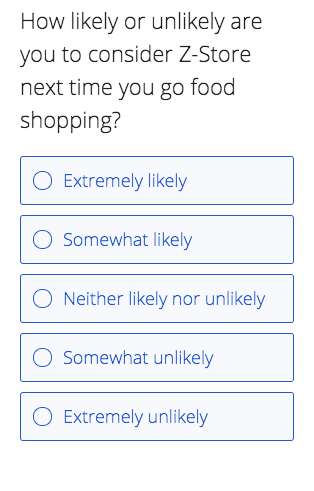
Example questions to ask:
- How likely would you be to recommend [BRAND]?
- What words come to mind when you think of [BRAND]?
- When you think of [PRODUCT CATEGORY], what brands come to mind?
- What led to that decision?
- What brand is the most recognizable in [PRODUCT CATEGORY]?
- If [BRAND] was a person, how would you describe them?
- If so, where?
- What did they make you think?
- List five words you would choose to describe [BRAND]
Focus groups
Focus groups, whether in a room together on in a digital space, allow for more in-depth answers to common brand research questions. You can use these groups to dive a little deeper into qualitative insights – like brand perception and brand associations.
Focus groups can be organized in person by finding willing local participants (for example, by contacting existing customers or by advertising on social media), or they can be conducted online. For example, Twitter Insiders acts as a way to solicit feedback and insights from thousands of online users. Traditionally, these groups offer incentives to participants.
There are also plenty of focus group and research panel providers out there; if you’re thinking of using one, here are a couple of things to look for:
1. A large respondent pool
It sounds obvious, but they need to be able to provide the right people at the right time. The best providers will have a vast range of possible respondents across different countries and demographic and social groups.
2. Support when you need it
A great provider will do more than just deliver the sample. They’ll be on hand to support you with questions about designing your survey , running the process, and conducting the right analysis afterward.
Digital listening
If you want to know what people are saying about your brand, you just have to listen! People will be talking about your organization on social media, on third-party review sites, over email, and on the phone to your contact center agents; the smartest brands are the ones who know how to piece all that information together.
An intelligent brand experience management suite can listen to all these disparate conversations for you, bring them together in one place, and use AI and natural language processing to assign qualitative values like emotion and sentiment – and then turn all that information into useful, actionable suggestions.
BrandXM , for example, can both listen and engage with consumers – passively and proactively – on a continuous basis. Our brand tracking tools then assign meaning to those interactions, painting a vivid picture of your brand perception, awareness, loyalty, and more.
Research as part of ongoing brand tracking
Research like this should never be seen as a one-and-done tactic. Instead, it’s a core part of building brand value on an ongoing basis. The insights you glean from your research will be inherently more accurate and useful if they derive from real-time listening and frequent questioning, so it’s crucial to think of research as one part of a permanent improvement strategy.
Identify the greatest areas of opportunity for your brand, so you can focus on strengthening the attributes that drive consumers and differentiate you from the competition
Make decisions faster, with real-time access to the brand insights and the ability to drill down whenever curiosity strikes
Simulate scenarios for your brand so you can anticipate how your tactics can move key metrics like awareness or equity
Understand the business value of your rebranding efforts and discover the factors that drive your success, easily replicating positive action
Related resources
Brand Equity
Brand Value 7 min read
Customer-based brand equity models 10 min read, brand equity research 5 min read, brand equity 20 min read, top of mind awareness 11 min read.
Market Segmentation
Market Fragmentation 9 min read
Brand Perception
Brand Sentiment 18 min read
Request demo.
Ready to learn more about Qualtrics?
Coping with the big switch: How paid loyalty programs can help bring consumers back to your brand
Among the changes to lives and livelihoods during the COVID-19 pandemic has been a massive shock to consumer loyalty. McKinsey’s latest research on consumer sentiment has revealed that 35 percent of United States consumers have tried a new brand since the crisis began while 77 percent have also tried new shopping behaviors, including new channels, stores, and brands. That rate generally holds true for consumers surveyed around the world.
The reasons for that unprecedented shift include product availability and price, but the trend underscores the broader challenge to traditional loyalty models and programs. The shift away from points-only loyalty programs was already well under way when the crisis hit. In this new paradigm, paid loyalty programs offer an attractive option for companies both to attract new customers and to shore up long-term customer value in the midst of a tectonic shift in consumer loyalty and preferences.
A 2020 McKinsey survey on loyalty programs found that members of paid loyalty programs are 60 percent more likely to spend more on the brand after subscribing, while free loyalty programs only increase that likelihood by 30 percent. In addition, paid loyalty programs drive higher purchase frequency, basket size, and brand affinity compared with free loyalty programs (Exhibit 1). As a result, paying members can be worth several times more than nonpaying members, even setting aside revenue from membership fees themselves.
The landscape of paid loyalty programs is small today, but it’s expanding rapidly. Recently, major brands have launched paid loyalty programs to fund unique experiential benefits and offer an air of distinction to members. These companies and many others are capitalizing on this emerging loyalty model as a way of satisfying their increasingly connected and experience-driven consumers .
Paid loyalty: What is it?
On the surface, paid loyalty programs can resemble traditional loyalty programs with just one small catch: a participation fee. This can take the form of a one-time membership fee or a recurring subscription. But the distinction of paid loyalty goes beyond price alone (see sidebar, “Fee-based commercial models”).
Fee-based commercial models
Although they may look or function similarly, paid loyalty programs are distinct from other fee-based commercial models. All have a role in driving engagement with customers and can be used to achieve a specific business goal or outcome.
- Pure-play membership: Gated programs requiring paid membership for access to base products or services. Compared with transaction-based commerce, membership business models can reduce the cost to serve, enrich data on consumer behavior, and create opportunities for more service-oriented offerings.
- Subscription e-commerce: Subscription-based means of buying products online, typically for replenishment or curated goods. Subscription e-commerce offers brands a way to save consumers time and money or to pique their interest in new items and assortments.
- “Freemium”: Subscription-based pricing models where a paid subscription unlocks unlimited access, removing paywalls and advertisements from the free version of the service. Freemium is an effective model for customer acquisition, providing a low bar to sign up and incentivizing customers to switch to a paid tier.
- Paid loyalty: Fee-based loyalty programs that engage valuable customers with a high-touch experience, offering immediate and ongoing benefits (free shipping, for example, or membership discounts) for a one-time or recurring fee. Paid loyalty can help brands fund ultra-premium offerings and lock in customer loyalty in verticals with low brand differentiation.
Paid programs have a higher burden of proof to acquire customers, but they typically derive higher customer value from those who sign up. Why would consumers be willing to pay up front for loyalty programs, when conventionally they have been free to use? When done right, paid loyalty elevates the overall consumer experience, delivering bespoke, high-value rewards and drawing the consumer into an exclusive community oriented around a shared brand promise or offering.
Consumer demand for paid loyalty programs is growing. In 2019, consumers spent an estimated $25 billion to $30 billion on paid loyalty programs, about a 25 to 50 percent growth rate from the previous year. With 63 percent of consumers already members of at least one paid loyalty program, it’s clear that paid loyalty is not a niche trend (Exhibit 2).
Would you like to learn more about our Marketing & Sales Practice ?
When paid loyalty makes sense.
Paid loyalty programs will suit some industries and business models more than others. Here are two business objectives that paid loyalty programs may help accomplish:
1. Funding premium rewards that are too expensive to offer more broadly
In recent years, the battle to retain highest-value customers has intensified and driven up the cost to serve. Some companies have responded by quietly paring back or devaluing their loyalty offerings, a solution that only serves to exacerbate the problem by leading consumers to engage less with the brand. On the other hand, some winning companies are shifting the loyalty paradigm itself by bolstering their offerings and charging customers an access fee to help fund more-expensive premium benefits. As an example, Lululemon’s paid program offers members free goods, exercise classes, and exclusive digital content as part of its $128 subscription fee. While Lululemon’s program is still being piloted in select cities as of 2020, the company has touted its early success. 1 David Marino-Nachison, “Lululemon stock is rising as its biggest bull touts its loyalty program,” Barron’s , July 12, 2019, barrons.com. Lululemon CEO Calvin McDonald indicated that the program’s results have exceeded expectations in every pilot market to date.
2. Locking in customers in a highly fragmented or undifferentiated line of business
In industries where multiple companies offer comparable products (like pharmacies and convenience stores), and where environmental considerations, such as location or hours, may otherwise override brand preference, paid loyalty’s up-front pricing can help a company lock high-value customers into its ecosystem and reduce brand switching. For instance, the CVS CarePass program, which charges a $5 monthly fee, offers its members 20 percent off all CVS Health brand products in addition to premium services like free shipping and a 24/7 pharmacy helpline. Where true product differentiation among competitors is scant, subscription-based benefits can incentivize members to stick with a brand. CVS’s program is yielding results: the average CarePass member spends 15 to 20 percent more after joining. 2 “CVS Pharmacy expands CarePass program nationwide,” CVSHealth, August 5, 2019, cvshealth.com.
Brands struggling to compete in a highly fragmented or undifferentiated market should consider paid loyalty as a means of acquiring consumers and creating an economic loyalty loop, where the paid features make it unfavorable to switch brands.

Preparing for loyalty’s next frontier: Ecosystems
Getting paid loyalty right.
Paid loyalty can suit several business needs, but the program must be designed with care to ensure value for both the brand and the paying customer. Based on consumer surveys and research into existing programs, we suggest there are three primary factors on which paid loyalty programs must deliver:
1. To drive sign-ups, benefits must clearly outweigh fees
Paid programs typically offer enticing benefits, but the sign-up fee can be a psychological barrier for some customers. While experiential or “soft” benefits are vital for customer retention, brands can drive sign-ups by promoting the program’s “hard” benefits that have an anchor price in the market: discounts and free products or services. In our consumer research on paid loyalty, we found that consumers expect to receive at least a 150 percent return on their subscription fee in the form of new offerings. The takeaway for brands considering a paid program is clear: if you’re going to charge, you must proactively demonstrate your value.
2. Retaining customers relies on offering more experiential advantages
Hard-value benefits like discounts and free products may hook consumers into the program, but they are not enough to retain them. To excite consumers long-term and avoid losing them at renewal, brands must use the membership fees to invest in exclusive offerings with more emotional resonance, such as access to personalized experiences or members-only content. Our research shows that brand affinity and experiential benefits are more important factors in driving subscriber retention than the hard-value benefits that led them to sign up (Exhibit 3).
Transactional perks like free shipping—long the hallmark of Amazon Prime and other paid programs—are becoming table-stakes offerings, no longer sufficient to grow membership and create enduring loyalty. The benefits that truly resonate with consumers will differ by vertical, brand, and customer segment. As a result, a robust consumer-insights program that includes surveys, focus groups, and interviews is essential to identifying what will unlock experience-led loyalty.
3. Keep engagement levels high
With paid programs, it is critical to win the subscriber early and continuously, offering benefits that can be used immediately upon sign-up and frequently thereafter. According to our research, 50 percent of cancellations occur within the first year of membership. Consumers’ most frequent reason for cancellation was not using the benefits enough to justify the sustained cost. Retaining customers past the critical first renewal requires brands to adopt more nimble and everyday means of rewarding their members, as well as a robust marketing program to keep them engaged. “Everyday discounts” and a variety of frequently recurring member events ensure that the program remains top-of-mind for consumers. Each additional consumer interaction creates a virtuous flywheel that elevates the program’s value and the perceived cost of leaving.
Important questions to consider before launching paid loyalty programs
Consumers in paid loyalty programs spend more, transact more frequently, and are more likely to engage with a brand’s broader suite of offerings. They are also a source of data and insights that can enable brands to fine-tune their messaging and offers based on a holistic view of consumer behavior.
Moreover, fees from paid loyalty programs can provide a constrained loyalty budget with an influx of cash to reinvest in stronger benefits and a superior consumer experience. Our research shows that 83 percent of consumers expect personalized content and experiences from their favorite brands, which paid programs are uniquely positioned to provide. As consumers increasingly look to brands for tailored experiences, loyalty offerings oriented around community and exclusivity will help brands provide them.
As brands consider a paid loyalty strategy, they should consider whether any of the following situations apply to them:
- Am I looking for a way to expand or enrich my loyalty ecosystem and increase consumer touchpoints?
- Am I competing in a highly fragmented market where paid loyalty could drive commitment and create higher switching costs?
- Would a paid program enable me to offer bespoke, high-value rewards or experiential offerings that I cannot deliver today?
- Are my highest-value customers at risk of churning?
- Can I increase brand equity by inviting my consumers into an exclusive community oriented around shared behaviors and preferences?
Brands that successfully execute the pivot to paid loyalty programs will open a new avenue to surprise and delight their strongest customers. In a world where personalization is the frontier of consumer engagement, paid loyalty is a winning strategy.
Julien Boudet is a senior partner in McKinsey's Southern California office, Jess Huang is a partner in the Silicon Valley office, and Ryter von Difloe is a consultant in the Seattle office.
The authors would like to thank Michael Tappel for his contributions to this article.
Explore a career with us
Related articles.

Customer loyalty: The new generation
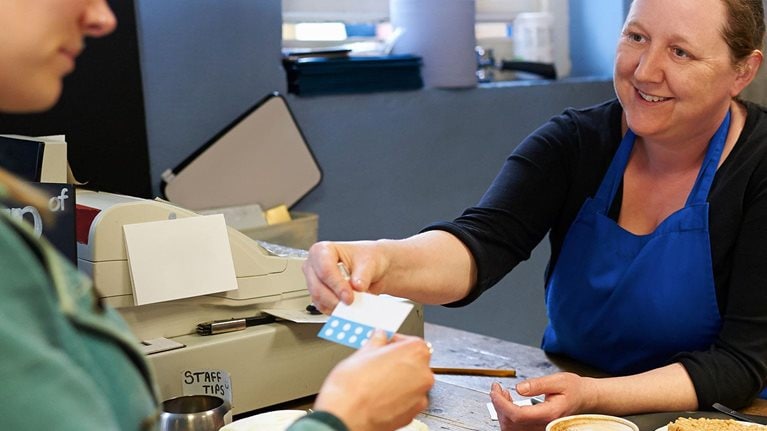
Why customer experience is key for loyalty programs

How marketing leaders can both manage the coronavirus crisis and plan for the future
Brand loyalty explained by concept recall: recognizing the significance of the brand concept compared to features
- Original Article
- Published: 09 June 2021
- Volume 9 , pages 185–198, ( 2021 )
Cite this article

- Takumi Kato ORCID: orcid.org/0000-0002-1795-4754 1
9222 Accesses
7 Citations
1 Altmetric
Explore all metrics
Consumers may be attracted to superficial functionality and design, but they may easily switch brands when another company’s product/service with higher functionality and a more fashionable design appears. If consumers remain loyal to a brand, it is because they understand, sympathize with, and value the brand’s concept. However, few studies have focused on brand concept as a factor of loyalty. Therefore, this study verified the influence of the brand concept on repurchase intention. Through multiple regression analysis of Apple MacBook Pro, Dyson Big Ball, Nintendo Switch, Facebook, Starbucks, and Tokyo Disney Resort users in Japan, the first hypothesis—consumers who recall a brand concept are more likely to have repurchase intention than those who recall specific features when asked about brand attractiveness—was supported. Furthermore, Fisher’s exact test supported a second hypothesis—consumers with high loyalty maintain high-level construal, even if they use a brand frequently and recall the concept as the brand’s attractiveness, contrary to construal level theory. By introducing the viewpoint of brand loyalty, the conditions under which construal level theory does not conform were shown. The present study encourages reaffirmation of the importance of brand concept and suggests the concept recall index to effectively use management resources.
Similar content being viewed by others

Does Concept Recall in Brand Image Show High Loyalty? An Experimental Study on the Apple MacBook

Brand Concept Rather Than Brand Image?: Consumer-Oriented Evaluation Items that Should Be Managed as Factors of Brand Loyalty

An Empirical Study of Brand Concept Recall as a Predictor of Brand Loyalty for Dyson
Avoid common mistakes on your manuscript.
Introduction
With technological advances, product/service functionality often exceeds the standards that consumers require, and they see little difference between brands. This means that competitiveness between brands is shifting to emotional value, such as design, rather than functional value (Noble and Kumar 2008 ). Although corporate engineers were not previously interested in subjective aesthetics (Adams 2011 ), the importance of emotional value is now recognized, and companies increasingly focus on design, as demonstrated by the growing number of companies that have chief design officers (Stuhl 2014 ).
Nevertheless, even when the design is improved, a product/service can seem similar to another from the consumer’s point of view, and it can be difficult to improve customers’ perceptions of value. One reason may be that the brand concept of the product/service is ambiguous and focuses too strongly on design/UX. Consumers may be attracted to superficial functionality and design, but they may easily switch brands when another company’s product/service with higher functionality and a more fashionable design appears. If a consumer remains loyal to a brand, it is because they understand, sympathize with, and value the brand’s concept (Aaker and Joachimsthaler 2000 ).
However, while previous brand management studies have clarified factors related to loyalty by assessing features such as product/service performance, quality, and design (Chen 2012 ; Chiu et al. 2009 ; Devaraj et al. 2001 ; Homburg et al. 2015 ; Hsu et al. 2018 ; Kumar et al. 2011 ; Lee et al. 2015 ; Shen and Yahya 2021 ; Yeh et al. 2016 ; Zehir et al. 2011 ), few studies have focused on the brand concept of a product/service (hereinafter the brand concept) as a factor of loyalty. Accordingly, the present study hypothesized that consumers who recall a brand concept are more likely to exhibit repurchase intention than consumers who recall specific features, such as attractiveness. In other words, although the importance of brand concept is recognized as a theory of business administration and marketing (Gardner and Levy 1955 ; Lafley and Martin 2013 ; Park et al. 1991 ; Simões and Dibb 2001 ; Stengel et al. 2003 ; Tilley 1999 ), to the best of my knowledge, there have been no attempts to demonstrate it as a factor that explains consumer loyalty.
Furthermore, this study also incorporated another theoretical viewpoint of consumer behavior research. According to construal level theory (CLT), when experience with using a product/service increases, the construal level decreases, and it becomes easier to focus on specific rather than essential features (Trope and Liberman 2000 ). However, previous research on CLT (Hamilton and Thompson 2007 ; Kim et al. 2008 ; Liberman et al. 2007 ; Roehm and Roehm 2011 ; Trope and Liberman 2000 ) has not included the perspective of brand loyalty. Thus, few studies have examined the present study’s second hypothesis: consumers with high loyalty maintain high-level construal, even though they use the brand frequently and can recall the brand concept as a feature of its attractiveness.
Although the importance of brand concept has been widely asserted in academic research on business administration and marketing, effects specifically related to brand concept have not been quantitatively evaluated. Thus, the present study encourages reaffirmation of the importance of brand concept and applies the concept of recall index to effectively use the means of design and UX for building strong brands.
Literature review
Brand concept refers to brand-unique abstract meanings that typically originate from a firm’s efforts to differentiate itself from its competitors (Park et al. 1991 ). A brand concept defines the value provided to customers and should meet consumers’ needs (Park et al. 1986 ). The framework of a brand concept comprises the target (who), value and positioning (what), and execution method (how; Lafley and Martin 2013 ; Stengel et al. 2003 ). For example, Starbucks describes its concept as the “third place” (Schultz 1997 ; Starbucks 2020 ), for which the “who” would be consumers looking for a place to relax when they go out, the “what” is a place outside of home or work where people can spend relaxing time alone or gather for a sense of community, and the “how” is by providing an atmosphere that incorporates aspects such as earth tones, comfortable music, and coffee.
Brand image refers to consumers’ cultivated perceptions of products and advertisements that are developed based on concepts devised by marketers (Zenker 2014 ). Further, consumers will develop attitudes toward a brand through their experience with its products/services and advertising, and an image will be formed as brand knowledge (Campbell and Keller 2003 ; Hoeffler and Keller 2003 ). Therefore, the brand concept is the root of a product/service, and consumers form a brand image and gain knowledge by experiencing the value created by this concept.
The brand concept is the criterion for decision-making in all corporate activities, such as planning, development, production, and sales (Simões and Dibb 2001 ; Tilley 1999 ). Product/service development involves many day-to-day decisions made by various departments, and consistent standards need to be applied throughout the process. If a concept is ambiguous, it cannot be effectively applied, and the product/service’s purpose devolves to following trends already seen in the industry. Consistent target embodiment can be thought of in three ways: zero moment of truth when viewing a website, first moment of truth when viewing a product in the store, and second moment of truth when using a product (Lecinksi 2011 ). Branding helps consumers distinguish products/services from one another; if consumers value a brand’s meaning, they will be more loyal to it. Therefore, for a product/service to become a strong brand, it is necessary to clearly define the concept before it enters the market and maintain the concept and embodiment perceived by the consumer over its life (Gardner and Levy 1955 ).
In addition, the concept plays a large role in expanding a brand or forming brand alliances. The factor that distinguishes the success or failure of a brand extension is consistency within categories and concepts (Jin and Zou 2013 ; Lanseng and Olsen 2012 ; Park et al. 1991 ; Punyatoya 2014 ; Thorbjørnsen 2005 ). Consumers who exhibit high loyalty also have high demands for consistency (Samuelsen et al. 2015 ), and the consistency of a concept is more important than its category. For instance, Breitling for Bentley, a co-brand of Swiss mechanical watchmaker Breitling and Bentley's venerable luxury car in the UK, has a low degree of product category matching but a high reputation for its expressive concept matching (Lanseng and Olsen 2012 ).
Brand loyalty factors are generally explained by product/service features, such as performance (Kumar et al. 2011 ; Yeh et al. 2016 ), quality (Devaraj et al. 2001 ; Shen and Yahya 2021 ; Zehir et al. 2011 ), design (Homburg et al. 2015 ; Hsu et al. 2018 ), and UX/usability (Chen 2012 ; Chiu et al. 2009 ; Lee et al. 2015 ). Recently, more specific emotional elements, such as brand colors (Jin et al. 2019 ) and product sounds (Kato et al. 2020 ) have been studied. Alternatively, studies incorporating factor evaluation based on brand image (Unal and Aydın 2013 ), brand reputation (Han et al. 2021 ; Selnes 1993 ), brand trust (Chaudhuri and Holbrook 2001 ; Lau and Lee 1999 ), and word of mouth (Eelen et al. 2017 ; Liang et al. 2018 ; Podoshen 2006 ) are common. Thus, although many loyalty factors have been reported in academic research on marketing, there are few examples of research where brand concept has been explored as a loyalty factor. Previous research has proposed methods for understanding brand concept from the consumer's point of view; however, brand concept has not been evaluated as a loyalty factor (John et al. 2006 ; Schnittka et al. 2012 ). In addition, some research has divided concepts into general categories (e.g., functional, symbolic, luxurious; Bhat and Reddy 1998 ; Hagtvedt and Patrick 2009 ; Park et al. 1986 ; Topaloglu and Gokalp 2018 ), making it difficult to determine if these methods pinpoint whether consumers understand brand concepts, as the general categories are too broad.
Hence, compared to product/service features, there has been little evaluation of consumer loyalty as it relates to brand concept. There are three possible reasons for this. First, researchers and corporate marketers believe it is difficult for consumers to evaluate concepts that cannot be directly experienced. Second, many brand concepts are ambiguous, and marketers can lose sight of their purpose because they cannot clearly identify how their products/services are meaningful to customers (Blount and Leinwand 2019 ). When the concept is ambiguous, products/services rely on trendy, superficial designs and advanced functions, and it is difficult to evaluate the brand concept. Consistency is the most important factor in strengthening a brand, and the meaning (or concept) of the underlying brand is necessary to maintain consistency over a long period of time (Keller 2019 ). Third, even if there is a clear concept, there may not be a consistent embodiment of the product/service, and it could come across as ambiguous in the marketplace. It takes significant effort to consistently embody a concept without compromise when each corporate department makes different claims; therefore, a thoroughly implemented product/service is a rare entity that can grow into a strong brand (Gardner and Levy 1955 ; Park et al. 1986 ). In fact, companies with strong product/service brands have development processes that enhances the degree of perfection by embodying many prototypes based on the concept and testing them many times (Keller and Kotler 2009 ).
Consumers may be attracted to superficial functionality and design, but they may easily switch brands when another company’s product/service with higher functionality and a more fashionable design appears. If a consumer remains loyal to a brand, it is because they understand, sympathize with, and value the brand’s concept (Aaker and Joachimsthaler 2000 ). Hence, whether consumers recall the brand concept when asked about the attractiveness of the brand greatly influences their loyalty. Therefore, when asked about the attractiveness of a brand, consumers should be able to recall the keywords in its concept. If the focus is on a product/service with a clear concept that builds a strong brand in the market, evaluation should be possible. Therefore, the following hypothesis was derived:
Consumers who recall the brand concept are more likely to have a repurchase intention than consumers who recall specific features, such as its attractiveness.
However, this hypothesis is contrary to CLT. Psychological distance includes temporal, spatial, social, and empirical distance (Liberman et al. 2007 ). When there is great psychological distance between the consumer and object, the construal level is high, and the consumer grasps the essential attributes of the object. In contrast, when there is a small psychological distance between the consumer and the object, the construal level is low, and the consumer concretely grasps the object (Trope and Liberman 2000 ). A study of hotel review sites reported that essential attributes were more important when temporal and social distances were great (Kim et al. 2008 ). In a study of banks, fit with personal values was effective for long-term campaigns, and a specific amount of money was effective for short-term campaigns (Roehm and Roehm 2011 ). As experience with using a product/service increases, the psychological distance decreases, and the construal level becomes lower. In experiments on music player devices, consumers had a lower construal level when directly touching the product, and emphasis was placed on ease of use rather than product desirability (Hamilton and Thompson 2007 ). However, this study lacked a perspective on brand loyalty. There is a clear difference between consumers who use a product/service due to inertia and those who use it because of an attachment, even if both groups use it with the same frequency (Dick and Basu 1994 ). Therefore, as shown in Fig. 1 , two hypotheses were derived:
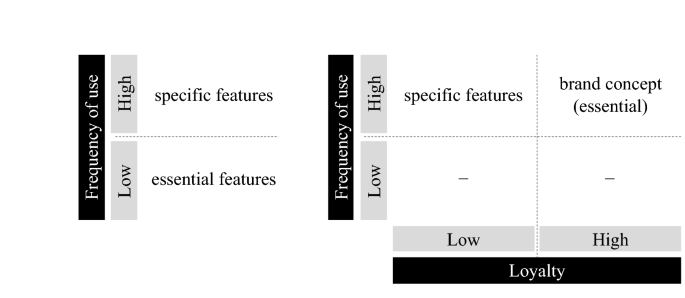
Visual depiction of H2 (left side: construal-level theory, right side: hypothesis in this study)
Consumers with low loyalty have low-level construal when they use a brand frequently, and recall specific features, such as function and design, as the attractiveness of the brand (consistent with CLT).
Consumers with high loyalty maintain high-level construal, even if they use a brand frequently, and recall the concept as the attractiveness of the brand (contrary to CLT).
Research method
Survey method.
This study verified the three hypotheses with the target product brands of Apple MacBook Pro (hereafter, Apple), Dyson Big Ball (canister vacuum cleaner, hereafter, Dyson), and Nintendo Switch (hereafter, Nintendo), and target service brands Facebook, Starbucks, and Tokyo Disney Resort (hereafter, Disney). These brands were selected for two reasons: confirmation of the concept on the corporate website and covering diverse B2C industries. An online survey was conducted in Japan from November 5 to 10 2020. Inclusion criteria for respondents were that they (a) were aged between 20 and 59 years; (b) had purchased new products from three of the target brands; and (c) used the target brand at least once a month (for Disney, at least once every three years).
The survey was randomly distributed through a survey panel owned by a major Japanese research company, Cross Marketing, Inc. The survey consisted of a screening survey and a main survey, both conducted online. The screening survey identified respondents who met criteria (a)–(c). Those who met these criteria were immediately routed to the main survey. The screening survey comprised eight questions: (1) gender, (2) age, (3) area of residence, (4) occupation, (5) annual household income, (6) ownership of each product brand, (7) how the product brand was purchased, and (8) frequency of use of the brand. When the criteria were met for multiple brands in (6)–(8), the respondent was randomly assigned to one brand and directed to the main survey. The results of the survey collection were as follows: of 41,077 screening survey respondents, 40,139 completed it; of these, 2953 responded to the main survey, and 2897 completed it. Next, 400 respondents for each brand were randomly sampled for a total of 2400 respondents. The sample sizes were evenly distributed for each brand for two reasons: first, to ensure bias-free evaluation; and second to ensure that the number of concepts recalled could be easily compared. The distribution is shown in Table 1 .
In the main survey, respondents were asked about one assigned brand. The questionnaire items were as follows: (9) satisfaction, (10) recommendation intention, (11) repurchase intention (product)/reuse intention (service; hereinafter, repurchase intention), (12) reason for repurchase intention. Items (9)–(11) were rated on a 7-point Likert scale (1 = very unsatisfied to 7 = very satisfied). The mean values (satisfaction, recommendation intention, repurchase intention) for the brands were as follows: Apple (5.688, 5.523, 5.713), Dyson (4.895, 4.743, 4.535), Nintendo (5.640, 5.445, 4.313), Facebook (4.490, 4.298, 4.810), Starbucks (5.458, 5.415, 5.858), and Disney (5.580, 5.650, 5.888). Item (12) was a pure recall question, in which an answer was freely requested without presenting options to the respondent. This was because aided recall, which presents options, introduces bias, and the options may then be overestimated (Kardes et al. 2002 ). There was concern that the concept of interest in this study would encourage consumers who were not normally aware of it to recognize it. By using pure recall, respondents could provide answers about a brand concept only if they really understood it.
Verification method
It should be noted that, to date, there is no established brand concept framework or evaluation method. In this study, the focus was on whether consumers could recall the concept when asked about the attractiveness of a brand. Furthermore, to avoid introducing bias, no options were presented and the answer was to be provided by pure recall. Therefore, consumer responses were evaluated based on whether they included keywords from the concepts published by each brand.
The concepts for each brand as extracted from their official websites were as follows: Apple, “the ultimate work tool for professionals who innovate in the world” (Apple 2020 ); Dyson, “the cleaner that doesn’t lose suction” (Dyson 2000 ); Nintendo, “transforming from home console to portable system in a snap” and “controllers give you total gameplay flexibility” (Nintendo 2020 ); Facebook, “give people the power to build community and bring the world closer together” (Facebook 2020 ); Starbucks, “third place” (Schultz 1997 ; Starbucks 2020 ); and Disney, “the kingdom of dreams and magic” (Oriental Land Co. 2020 ). Note that Oriental Land Co. operates Tokyo Disney Resort under a license agreement with the Walt Disney Company.
The present study used natural language processing to determine whether respondents provided keywords used in the brand concepts as their stated reasons for repurchase intention. Words (nouns and adjectives) of interest were extracted from the sentences freely written by the respondents, and when they were used in a positive sense, an appearance flag called a “tag” was added. As shown in Table 2 , the concept tags for each brand were set, and the keywords were registered in the database. To eliminate subjectivity, the keywords for each brand were set to three (nouns and adjectives). For instance, Disney’s concept C6_Disney includes the words “dream,” “magic,” and “magical;” however, differences in notations with exactly the same meaning were taken into consideration. In the Japanese language, there are four ways to express an idea: kanji, hiragana, katakana, and English. For example, the word cute, “可愛い,” “かわいい,” “カワイイ,” [kawaii] and “キュート” [kjúːt] have the same meaning. In addition, it is necessary to understand specific features, such as function and design, as comparison targets. In natural language processing, there are no established standard tags; thus, the researchers defined the tags, and as the words contained in data differ, it was necessary to define the tags that matched the data. In this study, features that appeared more than 20 times in total were extracted and used as tags. Therefore, four tags were set as emotional values: design, convenience, fun, and delicious. Functional values were set as: function, quality, information, and lineup. Direct negative expressions, such as failure, heavy, expensive, coronavirus, “I already have it (hence, no repurchase intention),” and “nothing special,” were also set.
Nouns and adjectives were extracted by morphological analysis; when registered words were detected, parsing defined whether a word was stated positively. If it was positive, the corresponding tag was added. If a word belonging to the same tag was detected multiple times in one text, the corresponding tag was only added once. Japanese open-source software MeCab was used for morphological analysis and CaboCha was used for parsing. There were 1988 tags from the 2400 respondents, and 729 respondents were not tagged. The distribution of tags is shown in Table 2 . For example, for the C1_Apple tag, 34 out of 400 people mention the concept. The percentage of people who mentioned the concept (concept recall rate) was highest for Disney, at 28.5%, and lowest for Nintendo, at 6.75%. Note that some texts mentioned words registered as Apple’s concept in other brands, but this study dealt only with the concept of specific brands. Then, as shown in Table 3 , the respondent attributes and tags were made into dummy variables, and the subsequent analysis was conducted.
H1 was verified by multiple regression analysis in which the objective variable was repurchase intention (No. 1 in Table 3 ), the control variables were the attribute dummies obtained in the screening survey (No. 4–33), and the explanatory variables were the tag dummies (No. 34–48). Note that when 2400 (number of respondents) is multiplied by the mean of the tag dummies in Table 3 , this equals the total number in Table 2 . The concept was that only tags that match each brand are handled; thus, the total is 428. Since there were many variables, the stepwise method was adopted: estimate the regression equation that incorporates all the variables and remove the variables to improve Akaike's information criterion (AIC). Then, when the AIC ceases to improve, the model is finalized. H1 was tested by a model for all brands to reach generalized conclusions. In addition, models for each brand were built for consideration.
H2-1 and H2-2 were verified by propensity score matching (Rosenbaum and Rubin 1983 ), a typical method for estimating causal effects when random allocation designs for treatment are difficult. Consumer attribute variables were aggregated into one variable called the propensity score, and variables other than the presence or absence of treatment were homogenized. Here, as shown in Table 1 , 756 people who selected the highest frequency, “five to seven times a week” (for Disney, once a week), for question (8) were defined as the treatment group (frequent users) and 1644 others were defined as the control group (non-frequent users). Since the characteristics of consumers with high frequency of use and those with low frequency of use differed, the causal effect was estimated by matching subjects with close propensity scores and homogenizing both groups. When the true value of the propensity score of each subject is unknown, estimating from the data by a logistic regression model is common.
First, loyalty was extracted by factor analysis from the three variables of satisfaction, recommendation intention, and repurchase intention (No. 1–3 in Table 3 ), and the factor scores of each respondent were calculated. The factor scores ranged from − 3.3 to 1.4, and 539 respondents with 0.7 or higher, who corresponded to approximately the top 20%, were defined as high loyalty and 1861 as low loyalty. From the concept (No. 34) and the specific feature (No. 35–42) in the answers to question (12), respondents were categorized into one of the recall categories: neither (None), only the specific feature (Feature), only the concept (Concept), or both (Both).
Next, as shown Table 4 , each respondent’s propensity score was estimated by a logistic regression model in which the treatment group dummy (No. 33 in Table 3 ) was used as the objective variable and the respondent attributes and brand dummy variables (No. 4–32) were used as the explanatory variables. The stepwise method was applied to variable selection. Then, the respondents with similar propensity scores were matched. Extraction was found to be non-restoring. As a result, out of 539 high-loyalty respondents (treatment group: 192; control group: 347), a total of 192 (96 in each group) were extracted. As shown in Table 5 , the respondent attributes of both groups are homogenized. Similarly, of the 1,861 low-loyalty respondents (treatment group: 564, control group: 1,297), a total of 964 (i.e., 482 in each group) were extracted.
Finally, a matrix of group × recall category was created for both high- and low-loyalty respondents, and the presence or absence of a significant difference was verified by Fisher’s exact test. The analysis environment was R, and the step AIC function from the MASS package for multiple regression analysis and the Match function from the Matching package for propensity score matching were used.
Results and discussion
As shown in Table 6 , when examining the results of the whole model estimated by multiple regression analysis, the tag E1_Design, at 0.681, was the highest among specific features. This finding was in line with previous studies that have reported the importance of emotional value as represented by design is increasing (Adams 2011 ; Noble and Kumar 2008 ; Sweeney and Soutar 2001 ). However, Concept at 0.710 contributed more than the specific characteristics of emotional value and functional value among the regression coefficients that were significant at the 5% level. Hence, H1 was supported.
In reviewing the results of each brand, Apple had the highest Concept at 0.934, followed by E1_Design at 0.889 and F2_Quality at 0.745. Negative effects extracted for Apple included N2_Heavy, which was very large at − 3.207, N3_Expensive − 0.756, and N6_None − 0.858. In terms of respondent attributes, the characteristics of high frequency of use, profession (e.g., designer), and male gender tended to be associated with high repurchase intention. The following four brands showed the same tendencies as Apple. Dyson: F1_Function 0.925, E1_Design 0.804 < Concept 1.013; Nintendo: E3_Fun 1.012 < Concept 1.755; Starbucks: F4_Lineup 0.313, E4_Delicious 0.295 < Concept 0.472; and Disney: E3_Fun 0.104, E4_Delicious − 0.233 < Concept 0.563. Five out of six brands were suitable, which was considered significant for the usefulness of concept recall. Only Facebook exhibited factors that were more effective than the concept confirmed; Concept 0.458 < E2_Convenience 0.770. This was likely because, as Facebook was the only brand in the study that can be used free of charge, the psychological barrier to reuse was low; thus, the factor that can be experienced more directly is prioritized. The business model of services provided free of charge is more peculiar than that of paid services (Hamari et al. 2020 ).
From another perspective, it was confirmed that individual brands have unique characteristics. Since E4_Delicious had a negative effect on Disney, this indicates that consumers seeking delicious food are less likely to have high repurchase intention. The tag N4_Corona was extracted for Disney as a negative effect. The COVID-19 pandemic has made it difficult for consumers who are concerned about infection to visit crowded places, such as theme parks. Consumers have been shown to behave in a risk-averse manner in a pandemic situation, especially in the tourism industry (Schiopu et al. 2021 ), which has been reportedly the most affected by business closures (Gursoy and Chi 2020 ). This was in line with the results obtained in this study. Since N5_Enough was extracted for Dyson and Nintendo, this indicated that a certain number of consumers have difficulty answering when asked about their next purchase intention, as they already have the product. As a job, Job_06_Freelancer in Starbucks became significant. As shown in the concept of the “third place” (Schultz 1997 ; Starbucks 2020 ), the place (in-store space) is vital. Therefore, with the growth of the gig economy, space at Starbucks is often also used as a workplace. In addition to the physical elements of WiFi and comfortable chairs, seeing other people working is reported to be stimulating, and moderate noise can enhance creativity (Mehta et al. 2012 ). This tendency was further strengthened by the increase in working remotely during the COVID-19 pandemic. In fact, in 2020, a Starbucks store designed as a “teleworking branch” for businesspeople opened in Ginza, Tokyo (Baseel 2020 ). However, Job_09_Student had a negative effect on Starbucks. Students find Starbucks to be expensive, and it is presumed that freelancers use the store as a workspace.
Next, the results for H2-1 and H2-2 were evaluated. As shown at the top of Table 7 , at low loyalty, there was no significant difference in distribution between the low-frequency-use control group and the high-frequency-use treatment group. The results of Fisher’s exact test found the p -value = 0.180, and no significant differences were confirmed. Meanwhile, in high loyalty, the ratio of the control group recalling brand concept was 13.5%, while that of the treatment group was 29.2%, and the feature decreased from 31.3 to 21.9%. The results of Fisher’s exact test found the p -value = 0.032, and it a significant difference was confirmed. From the above, although H2-1 was not supported, H2-2 was supported. Therefore, it can be concluded that, contrary to CLT, consumers with high loyalty maintain high-level construal, even if they use a brand frequently, and recall the concept as the attractiveness of products/services. In this way, it is the contribution of this study to introduce consumer loyalty as a new perspective to the concept of CLT and clarify the conditions of consumer behavior that do not match CLT. Furthermore, this study showed different results from CLT even in consumers with low loyalty. According to previous research on CLT (Hamilton and Thompson 2007 ; Kim et al. 2008 ; Roehm and Roehm 2011 ), the closer the psychological distance, the more the consumer’s interest shifts to specific rather than essential features. However, in this study, for consumers with low loyalty, there was no difference in the factors recalled as the attractiveness of the brand depending on the psychological distance measured by frequency of use. The reason was assumed that the definition of essential features was different. In previous studies, the core functions of the target products/services were defined as essential features. Thus, CLT did not address brand concept, unlike the present study. The verification of CLT from the viewpoint of brand concept is a novel feature of this study, and since there is limited knowledge in this area, further research is required.
Regarding implications for practice, first, companies should reaffirm the importance of brand concept. In this study, the effect of the concept was quantitatively shown in comparison with concrete features such as design. This makes it possible to more clearly understand the importance of concepts that were previously recognized as a theory of business administration and marketing (Gardner and Levy 1955 ; Lafley and Martin 2013 ; Park et al. 1991 ; Simões and Dibb 2001 ; Stengel et al. 2003 ; Tilley 1999 ). In a company, many departments and professionals are involved in developing and delivering products and services. If each department passes a judgment for varying purposes simultaneously, the focus will be blurred and products similar to that of other companies will be produced. The brand concept plays a major role here. In order for the concept to take root in the organization, it is important to present the basis for quantitatively showing its superiority as in this study. Second, the index of concept recall—a unique index proposed by this study—should be emphasized in brand management. In general, after measuring loyalty based on aspects such as recommendation intention and repurchase intention, efforts are made to understand the factors that contribute to loyalty by evaluating each specific feature of a product/service brand. While this study’s results certainly showed positive effects regarding design and performance, consumers who are attracted to superficial functionality and design may easily switch brands when a different company’s product offers higher functionality and a more fashionable design. In contrast, consumers who understand, sympathize with, and value a brand’s concept display stronger brand loyalty. Therefore, companies should evaluate whether consumers recall the concept as their reason for remaining loyal to a brand. It is hoped that the index of concept recall will be adopted not only in the industrial world but also in the academic world in research on consumer behavior and brand management.
In this study, hypotheses regarding concept recall were tested to identify the factors related to brand loyalty. The hypothesis that consumers who recall a brand concept are more likely to have repurchase intention than those who recall specific features (e.g., design) when asked about the attractiveness of a brand was supported. In addition, CLT argues that the more experience a consumer has with a product, the lower the construal level, and consumer interest shifts to specific rather than essential features. However, CLT does not include loyalty. Therefore, the present study supported its hypothesis contrary to CLT, that consumers with high loyalty maintain high-level construal, even if they use the brand frequently and recall the concept as the attractiveness of the product/service. Thus, when consumers are asked about the attractiveness of the brand, ability to recall the concept strongly influences loyalty.
There are three main limitations to the present study. First, generalization is limited, as only six target products/services were examined. In the future, it will be necessary to expand the target industries and number of brands. Second, the results may vary depending on the concept evaluation method. In this study, arbitrariness was eliminated as much as possible by extracting and using three keywords (nouns and adjectives) from the concept texts published by each company. However, results may vary slightly depending on the number of keywords and survey method (e.g., pure recall vs. aided recall). Third, since pure recall was applied, features that consumers usually have difficulty recalling are unlikely to appear in the evaluation (e.g., corporate social responsibility). Therefore, only typical features, such as design, convenience, function, and quality, were compared in this study. Thus, further research is required on these issues.
Aaker, D.A., and E. Joachimsthaler. 2000. Brand leadership . New York: The Free Press.
Google Scholar
Adams, J. 2011. Good products, bad products: Essential elements to achieving superior quality . New York: McGraw-Hill Education.
Apple. 2020. MacBook Pro . Apple. https://www.apple.com/jp/macbook-pro-16/ , accessed 1 April 2020.
Baseel, C. 2020. Starbucks opens teleworking branch in Tokyo’s Ginza. Japan Today . August 14, https://japantoday.com/category/business/starbucks-opens-teleworking-branch-in-tokyo%E2%80%99s-ginza , accessed 1 April 2020.
Blount, S., and P. Leinwand. 2019. Why are we here? Harvard Business Review 97 (6): 132–139.
Bhat, S., and S.K. Reddy. 1998. Symbolic and functional positioning of brands. Journal of Consumer Marketing 15 (1): 32–43.
Article Google Scholar
Campbell, M.C., and K.L. Keller. 2003. Brand familiarity and advertising repetition effects. Journal of Consumer Research 30 (2): 292–304.
Chaudhuri, A., and M.B. Holbrook. 2001. The chain of effects from brand trust and brand affect to brand performance: The role of brand loyalty. Journal of Marketing 65 (2): 81–93.
Chen, Y.Y. 2012. Why do consumers go internet shopping again? Understanding the antecedents of repurchase intention. Journal of Organizational Computing and Electronic Commerce 22 (1): 38–63.
Chiu, C.M., C.C. Chang, H.L. Cheng, and Y.H. Fang. 2009. Determinants of customer repurchase intention in online shopping. Online Information Review 33 (4): 761–784.
Devaraj, S., K.F. Matta, and E. Conlon. 2001. Product and service quality: The antecedents of customer loyalty in the automotive industry. Production and Operations Management 10 (4): 424–439.
Dick, A.S., and K. Basu. 1994. Customer loyalty: Toward an integrated conceptual framework. Journal of the Academy of Marketing Science 22 (2): 99–113.
Dyson, J. 2000. Against the odds: An autobiography . Knutsford: Texere.
Eelen, J., P. Özturan, and P.W. Verlegh. 2017. The differential impact of brand loyalty on traditional and online word of mouth: The moderating roles of self-brand connection and the desire to help the brand. International Journal of Research in Marketing 34 (4): 872–891.
Facebook. 2020 Our mission . Facebook. https://about.fb.com/company-info/ , accessed 1 April 2020.
Gardner, B.B., and S.J. Levy. 1955. The product and the brand. Harvard Business Review 33 (2): 33–39.
Gursoy, D., and C.G. Chi. 2020. Effects of COVID-19 pandemic on hospitality industry: Review of the current situations and a research agenda. Journal of Hospitality Marketing & Management 29 (5): 527–529.
Hagtvedt, H., and V.M. Patrick. 2009. The broad embrace of luxury: Hedonic potential as a driver of brand extendibility. Journal of Consumer Psychology 19 (4): 608–618.
Han, S.H., C.H.S. Chen, and T.J. Lee. 2021. The interaction between individual cultural values and the cognitive and social processes of global restaurant brand equity. International Journal of Hospitality Management 94: 102847.
Hamari, J., N. Hanner, and J. Koivisto. 2020. “Why pay premium in freemium services?” A study on perceived value, continued use and purchase intentions in free-to-play games. International Journal of Information Management 51: 102040.
Hamilton, R.W., and D.V. Thompson. 2007. Is there a substitute for direct experience? Comparing consumers’ preferences after direct and indirect product experiences. Journal of Consumer Research 34 (4): 546–555.
Hoeffler, S., and K.L. Keller. 2003. The marketing advantages of strong brands. Journal of Brand Management 10 (6): 421–445.
Homburg, C., M. Schwemmle, and C. Kuehnl. 2015. New product design: Concept, measurement, and consequences. Journal of Marketing 79 (3): 41–56.
Hsu, C.L., Y.C. Chen, T.N. Yang, W.K. Lin, and Y.H. Liu. 2018. Does product design matter? Exploring its influences in consumers’ psychological responses and brand loyalty. Information Technology & People 31 (3): 886–907.
Jin, C., M. Yoon, and J. Lee. 2019. The influence of brand color identity on brand association and loyalty. Journal of Product & Brand Management 21 (1): 50–62.
Jin, L., and D. Zou. 2013. Extend to online or offline? The effects of web-brand extension mode, similarity, and brand concept on consumer evaluation. Journal of Marketing Management 29 (7–8): 755–771.
John, D.R., B. Loken, K. Kim, and A.B. Monga. 2006. Brand concept maps: A methodology for identifying brand association networks. Journal of Marketing Research 43 (4): 549–563.
Kato, T., R. Yokote, T. Kondo, and K. Konishi. 2020. Effect of products’ startup sound on repurchase intention. International Journal of Japan Association for Management Systems 12 (1): 81–86.
Kardes, F.R., D.M. Sanbonmatsu, M.L. Cronley, and D.C. Houghton. 2002. Consideration set overvaluation: When impossibly favorable ratings of a set of brands are observed. Journal of Consumer Psychology 12 (4): 353–361.
Keller, K.L. 2019. Strategic brand management: Building, measuring, and managing brand equity . London: Pearson Education Limited.
Keller, K.L., and P. Kotler. 2009. Marketing management . Hoboken: Pearson Prentice Hall.
Kim, K., M. Zhang, and X. Li. 2008. Effects of temporal and social distance on consumer evaluations. Journal of Consumer Research 35 (4): 706–713.
Kumar, V., L. Batista, and R. Maull. 2011. The impact of operations performance on customer loyalty. Service Science 3 (2): 158–171.
Lafley, A.G., and R.L. Martin. 2013. Playing to win: How strategy really works . Brighton: Harvard Business Press.
Lanseng, E., and L.E. Olsen. 2012. Brand alliances: The role of brand concept consistency. European Journal of Marketing 46 (9): 1108–1126.
Lau, G.T., and S.H. Lee. 1999. Consumers’ trust in a brand and the link to brand loyalty. Journal of Market-Focused Management 4 (4): 341–370.
Lecinksi, J. 2011. Winning the zero moment of truth . Think with Google. https://www.thinkwithgoogle.com/future-of-marketing/emerging-technology/2011-winning-zmot-ebook/ , accessed 1 April 2020.
Lee, D., J. Moon, Y.J. Kim, and Y.Y. Mun. 2015. Antecedents and consequences of mobile phone usability: Linking simplicity and interactivity to satisfaction, trust, and brand loyalty. Information & Management 52 (3): 295–304.
Liang, L.J., H.C. Choi, and M. Joppe. 2018. Understanding repurchase intention of Airbnb consumers: Perceived authenticity, electronic word-of-mouth, and price sensitivity. Journal of Travel & Tourism Marketing 35 (1): 73–89.
Liberman, N., Y. Trope, and C. Wakslak. 2007. Construal level theory and consumer behavior. Journal of Consumer Psychology 17 (2): 113–117.
Mehta, R., R. Zhu, and A. Cheema. 2012. Is noise always bad? Exploring the effects of ambient noise on creative cognition. Journal of Consumer Research 39 (4): 784–799.
Nintendo. 2020. Nintendo switch . https://www.nintendo.com/switch/system/ , accessed 1 April 2020.
Noble, C.H., and M. Kumar. 2008. Using product design strategically to create deeper consumer connections. Business Horizons 51 (5): 441–450.
Oriental Land Co. 2020. Tokyo Disneyland. Facility Overview . OLC Group. http://www.olc.co.jp/en/tdr/profile.html , accessed 1 April 2020.
Park, C.W., B.J. Jaworski, and D.J. MacInnis. 1986. Strategic brand concept-image management. Journal of Marketing 50 (4): 135–145.
Park, C.W., S. Milberg, and R. Lawson. 1991. Evaluation of brand extensions: The role of product feature similarity and brand concept consistency. Journal of Consumer Research 18 (2): 185–193.
Podoshen, J.S. 2006. Word of mouth, brand loyalty, acculturation and the American Jewish consumer. Journal of Consumer Marketing 23 (5): 266–282.
Punyatoya, P. 2014. Evaluation of branding strategies for global versus local brand: The role of concept consistency. International Journal of Business Excellence 7 (1): 112–128.
Roehm, M.L., and H.A. Roehm Jr. 2011. The influence of redemption time frame on responses to incentives. Journal of the Academy of Marketing Science 39 (3): 363–375.
Rosenbaum, P.R., and D.B. Rubin. 1983. The central role of the propensity score in observational studies for causal effects. Biometrika 70 (1): 41–55.
Samuelsen, B.M., L.E. Olsen, and K.L. Keller. 2015. The multiple roles of fit between brand alliance partners in alliance attitude formation. Marketing Letters 26 (4): 619–629.
Schiopu, A.F., R.I. Hornoiu, M.A. Padurean, and A.M. Nica. 2021. Virus tinged? Exploring the facets of virtual reality use in tourism as a result of the COVID-19 pandemic. Telematics and Informatics 60: 101575.
Schnittka, O., H. Sattler, and S. Zenker. 2012. Advanced brand concept maps: A new approach for evaluating the favorability of brand association networks. International Journal of Research in Marketing 29 (3): 265–274.
Schultz, H. 1997. Pour your heart into it: How Starbucks built a company one cup at a time . Santa Clara: Hyperion.
Selnes, F. 1993. An examination of the effect of product performance on brand reputation, satisfaction and loyalty. European Journal of Marketing 27 (9): 19–35.
Shen, C., and Y. Yahya. 2021. The impact of service quality and price on passengers’ loyalty towards low-cost airlines: The Southeast Asia perspective. Journal of Air Transport Management 91: 101966.
Simões, C., and S. Dibb. 2001. Rethinking the brand concept: New brand orientation. Corporate Communications: An International Journal 6 (4): 217–224.
Starbucks. 2020. Starbucks principles for upholding the third place: For our partners, our customers and our communities . https://www.starbucks.com/responsibility/learn-more/policies/third-place , accessed 1 April 2020.
Stengel, J.R., A.L. Dixon, and C.T. Allen. 2003. Listening begins at home. Harvard Business Review 81 (11): 106–117.
Stuhl, M. 2014. What is behind the rise of the chief design officer? Forbes , November 11, https://www.forbes.com/sites/groupthink/2014/11/11/what-is-behind-the-rise-of-the-chief-design-officer/?sh=48fc0e433c25 , accessed 1 April 2020.
Sweeney, J.C., and G.N. Soutar. 2001. Consumer perceived value: The development of a multiple item scale. Journal of Retailing 77 (2): 203–220.
Thorbjørnsen, H. 2005. Brand extensions: Brand concept congruency and feedback effects revisited. Journal of Product and Brand Management 14 (4): 250–257.
Tilley, C. 1999. Built-in branding: How to engineer a leadership brand. Journal of Marketing Management 15 (1–3): 181–191.
Topaloglu, O., and O.N. Gokalp. 2018. How brand concept affects consumer response to product recalls: A longitudinal study in the U.S. auto industry. Journal of Business Research 88: 245–254.
Trope, Y., and N. Liberman. 2000. Temporal construal and time-dependent changes in preference. Journal of Personality and Social Psychology 79 (6): 876–889.
Unal, S., and H. Aydın. 2013. An investigation on the evaluation of the factors affecting brand love. Procedia Social and Behavioral Sciences 92: 76–85.
Yeh, C.H., Y.S. Wang, and K. Yieh. 2016. Predicting smartphone brand loyalty: Consumer value and consumer-brand identification perspectives. International Journal of Information Management 36 (3): 245–257.
Zehir, C., A. Şahin, H. Kitapçı, and M. Özşahin. 2011. The effects of brand communication and service quality in building brand loyalty through brand trust; the empirical research on global brands. Procedia Social and Behavioral Sciences 24: 1218–1231.
Zenker, S. 2014. Measuring place brand equity with the advanced Brand Concept Map (aBCM) method. Place Branding and Public Diplomacy 10 (2): 158–166.
Download references
This work was supported by JSPS KAKENHI Grant Number JP20K22115.
Author information
Authors and affiliations.
Graduate School of Humanities and Social Sciences, Saitama University, 255 Shimo-Okubo, Sakura-ku, Saitama City, Saitama, 338-8570, Japan
Takumi Kato
You can also search for this author in PubMed Google Scholar
Corresponding author
Correspondence to Takumi Kato .
Ethics declarations
Conflict of interest.
The corresponding author states that there is no conflict of interest.
Additional information
Publisher's note.
Springer Nature remains neutral with regard to jurisdictional claims in published maps and institutional affiliations.
Rights and permissions
Reprints and permissions
About this article
Kato, T. Brand loyalty explained by concept recall: recognizing the significance of the brand concept compared to features. J Market Anal 9 , 185–198 (2021). https://doi.org/10.1057/s41270-021-00115-w
Download citation
Revised : 08 March 2021
Accepted : 31 May 2021
Published : 09 June 2021
Issue Date : September 2021
DOI : https://doi.org/10.1057/s41270-021-00115-w
Share this article
Anyone you share the following link with will be able to read this content:
Sorry, a shareable link is not currently available for this article.
Provided by the Springer Nature SharedIt content-sharing initiative
- Brand management
- Concept recall
- Pure recall
- Construal level theory
- Find a journal
- Publish with us
- Track your research

IMAGES
VIDEO
COMMENTS
A customer loyalty survey is a questionnaire that's sent to customers to measure their commitment to your brand. It measures their trust levels, the likelihood of recommending your brand to others, and whether they'd make repeat purchases. Although they're similar, loyalty surveys shouldn't be confused with customer satisfaction surveys.
In a brand preference survey, you gauge to what extent consumers prefer a certain brand over others. You will have to ask questions about competitor brands, preferences in products and shopping, and their intentions when it comes to repeat purchases. Ask the right questions (and get the best insights) with our brand tracker template. 2.
A customer loyalty survey typically contains questions that revolve around customer feedback, brand satisfaction and reliability, which are important for any organization. Here are 7 different survey templates from Formplus which you can use to track customer loyalty for your brand. Customer Complaint Form Template.
More humanity would help. In this automated age, consumers still want to talk to a real person. Respondents said human interaction is important or very important for their loyalty to restaurants (58%), financial services (55%), pharmacies (53%) and hotels (52%). In fact, for each type of business, at least one-third of respondents said human ...
One of the best things about measuring brand loyalty through surveys is that they can be run regularly so you can track changes in loyalty, celebrate wins, and take swift corrective action when necessary. SurveyMonkey's Brand Tracking solution can help you establish a baseline and track changes in brand loyalty in real-time.
Then multiply by 100 to see the percentage of satisfied customers. (Number of satisfied customers (4 and 5) / Number of survey responses) x 100 = % of satisfied customers. So, if you had 2000 customers respond to your survey and 800 rated their experience a 4 or 5, your formula might look like: 800/2000 (.4) x 100 = 40% satisfied customers.
To give you a clear idea of why you should invest in customer loyalty surveys, let's have a look at the crucial benefits they bring to the table. #1. Customer Retention. The backbone of most businesses is having loyal customers who will stay with you through thick and thin.
Customers exhibit customer loyalty when they demonstrate a repeat purchase for a specific product or service. Customer loyalty takes effect when customers have a positive experience with a purchase that makes them feel connected to the brand's ideals and values. It's an experience that builds customer trust that leads to engaging with your ...
Building a solid brand is a long-term process and customer satisfaction and brand loyalty questionnaires help you accomplish that. How to use brand-loyalty questionnaires advantageously. Once a brand-loyalty questionnaire has been sent out, start preparing for the analysis phase. When reviewing the collected data, look for trends in different ...
Step 2: Design the Survey. Our online survey company recommends incorporating various question types to capture different aspects of brand loyalty. This can include: Likert Scale Questions: Use a 5-point or 7-point Likert scale to gauge respondents' agreement or disagreement with statements related to brand loyalty.
Time to start measuring! Surveys are the perfect tool to measure loyalty to your brand. These 5 metrics will get you the right insights: 1. Measure trust. In this digital age, we ask a lot of our customers, we'd like to know their e-mail, their birthday, … as much as we can really.
Brand Loyalty Survey. Building a brand loyalty will help you develop a core customer base who will repurchase from you again and again. Keep measuring it periodically so that you can improve and nurture based on the insights gathered. Measure Trust, Customer Satisfaction, Goodwill, Perceived Quality and Brand Value.
When asked what sort of actions they would be willing to take for brands they're loyal to, nearly 68% of 2020 survey respondents said they'd join the brand's loyalty or VIP program, up from 59.8% in 2019. Similarly, those willing to spend more on a brand if even cheaper options existed skyrocketed from 34.5% in 2019 to 56% in 2020.
Tips on how to create brand loyalty. Brand loyalty is something that needs to be nurtured over time - research from Yopto says most customers consider themselves loyal after more than three purchases. But there's lots you can do to grow loyalty on a continual basis…. 1. Be consistent.
A brand loyalty survey helps you understand the opinions and habits of the loyal customers who advocate for your brand. To build brand loyalty for long term success and track shifting brand loyalty, stay in communication with your audience. Ask for periodic feedback by surveying your customers and target market 2 to 4 times per year.
Brand research - sometimes called brand market research - is the act of investigating the various aspects of a new or longstanding brand to gain insights that can help curate brand value. Brands are the culmination of lots of different factors. Beyond the products and services it offers, a brand is also an ethos, a personality, a visual ...
Abstract: Brand loyalty has been of interest to researchers for many decades and known. as an amicable attitude, a lso commitment toward a particular bra nd, builds. around consumer satisfaction ...
Since the onset of the pandemic, more than 75 percent of consumers have changed their buying habits. In a historic shift in brand loyalty, 39 percent have either changed brands or retailers, and 79 percent of those intend to continue exploring their options in the next normal. 1 Shoppers are increasingly voting with their wallets based on a new ...
Four key findings from our 2024 survey. Financial rewards and simplicity and ease of use remain the most important loyalty program attributes with 86% of respondents rating them as "important" or "very important.". Flexibility is also critical, with four out of five consumers reporting they value flexibility when earning and redeeming ...
When done right, paid loyalty elevates the overall consumer experience, delivering bespoke, high-value rewards and drawing the consumer into an exclusive community oriented around a shared brand promise or offering. Consumer demand for paid loyalty programs is growing. In 2019, consumers spent an estimated $25 billion to $30 billion on paid ...
NPSAnd Brand Loyalty Survey Template. SurveyMonkey is rated 4.5 out of 5 from 18,000+ reviews on G2.com. When you need to know what people think of your brand, a great place to start is by measuring customer loyalty. We partnered with Zendesk to develop our expert-certified Net Promoter® Score and brand loyalty survey template to give you ...
Startup Brand Loyalty: A Survey -Based Study" is to address this gap by investigating the direct impact of consumer behaviour on brand loyalty in startups. The study will
By introducing the viewpoint of brand loyalty, the conditions under which construal level theory does not conform were shown. ... there are few examples of research where brand concept has been explored as a loyalty factor. ... the respondent was randomly assigned to one brand and directed to the main survey. The results of the survey ...
increased customer loyalty, improved brand image, and increased sales in the long term. Authentic marketing is an investment in building a long-term relationship with customers (Esmaeili et al ...